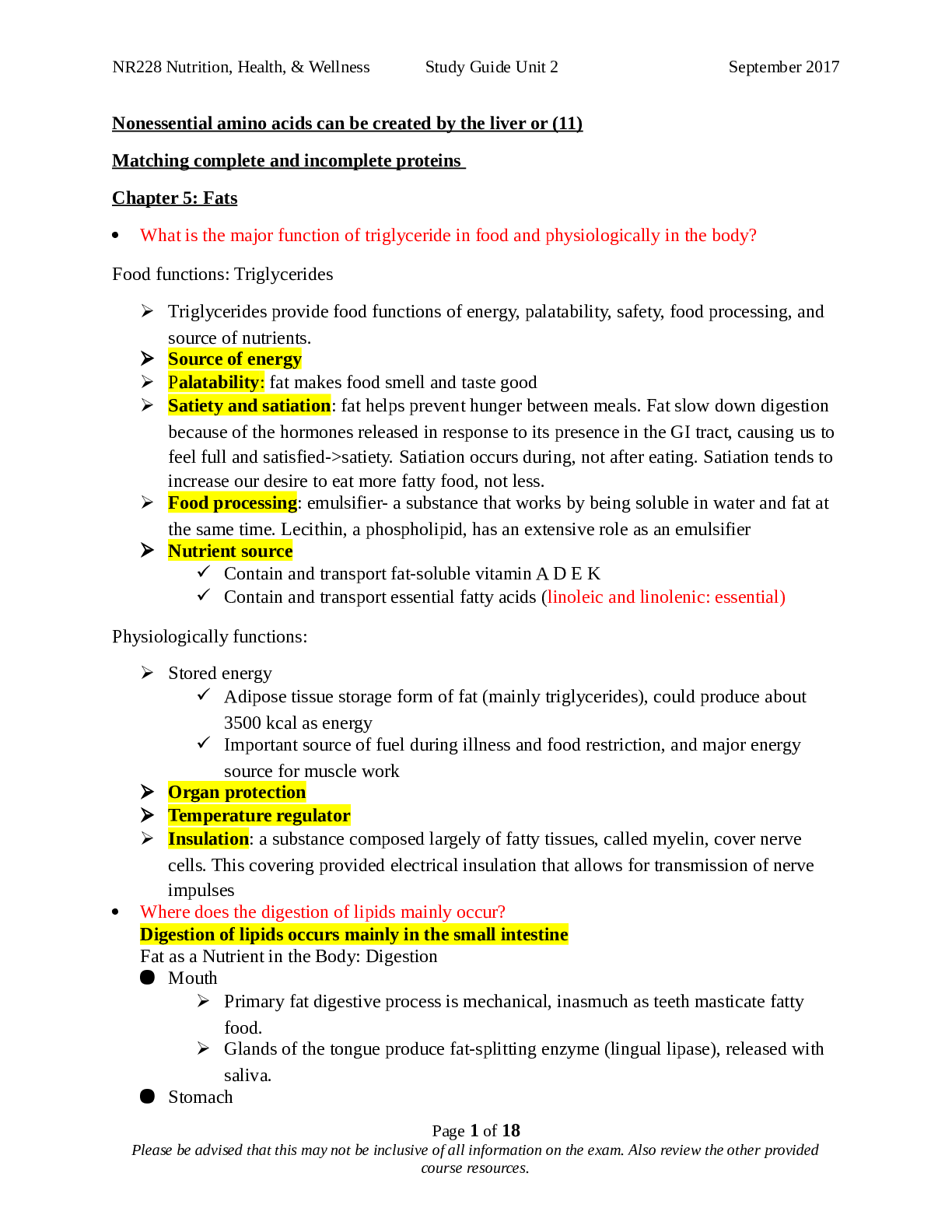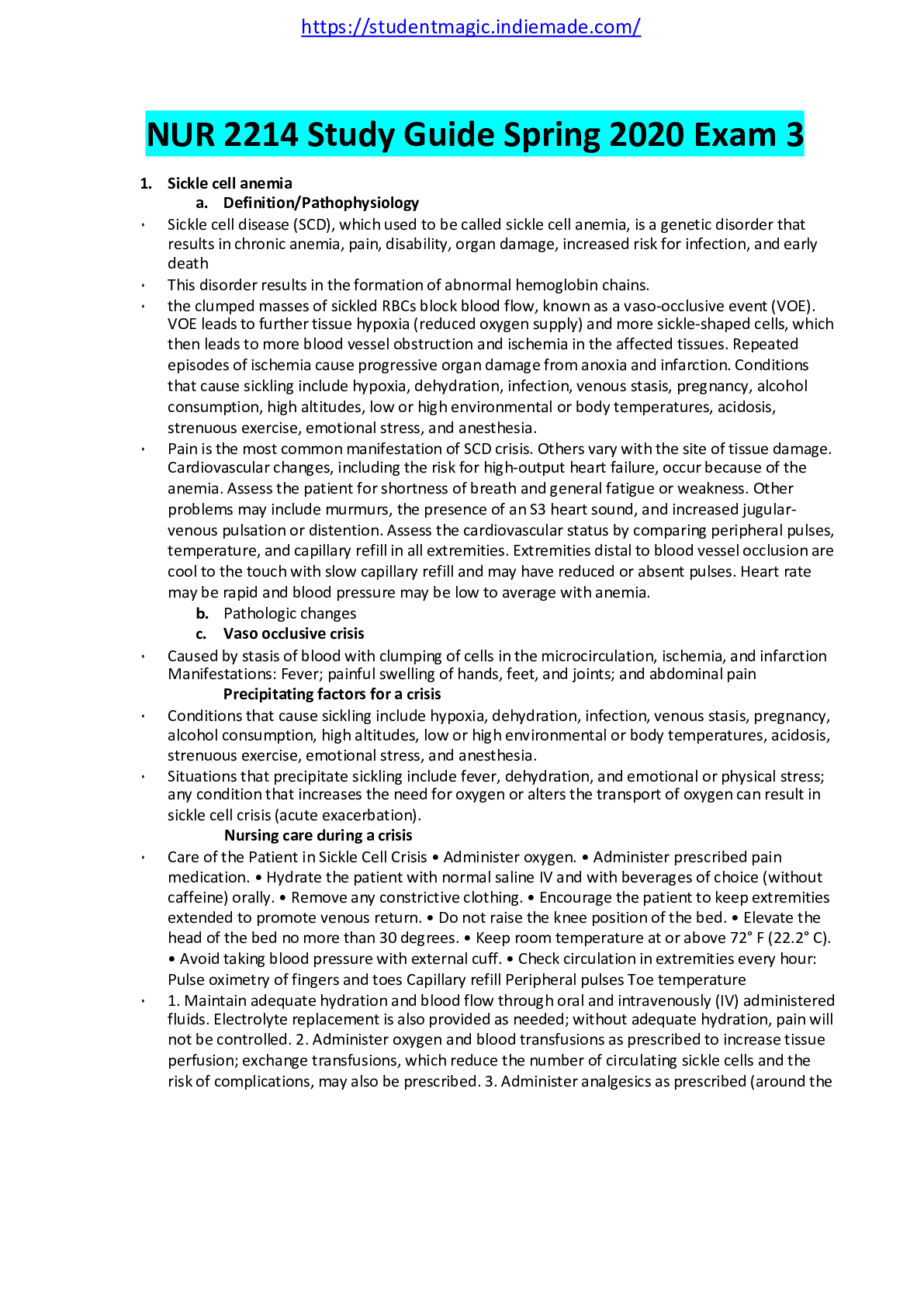Business > STUDY GUIDE > D080 Managing in a Global Business Environment Study Guide,100% CORRECT (All)
D080 Managing in a Global Business Environment Study Guide,100% CORRECT
Document Content and Description Below
D080 Managing in a Global Business Environment Study Guide Unit 2 Globalization Module 1: Political, Economic, and Legal Systems 1. What is globalization? a. Globalization is when internat... ional integration arises from the interchange of world views, products, ideas, and other aspects of culture. 2. What opportunities to businesses are brought by globalization? Globalism is characterized by an increasing number of worldwide connections, rapid and discontinuous change, an increasing number of diverse participants, and growing complexity. Globalism has resulted in a widespread sharing of ideas. Internet/social media/. globalization has allowed corporations to outsource manufacturing and service jobs from high-cost locations to lower cost locations, where corporations can pay workers lower salaries and provide fewer (or no) benefits. 3. What are the economic, political, and cultural effects of globalization? Elaborate on each of the aspect. a. Economic. Economic globalization refers to the widespread, international movement of goods, capital, services, technology, and information. It is the increasing economic integration and interdependence of national, regional, and local economies across the world through an intensification of the cross-border movement of goods, services, technologies, and capital. Economic globalization primarily comprises the globalization of production, finance, markets, technology, organizational regimes, institutions, corporations, and labor. b. Political - globalization may ultimately reduce the importance of nation-states. Supranational institutions, such as the European Union, the World Trade Organization (WTO), the Group of Eight (G8), and the International Criminal Court, serve to replace or extend national functions to facilitate international agreement. Increasingly, nongovernmental organizations (NGOs) influence public policy across national boundaries, including humanitarian aid and developmental efforts. c. . Cultural globalization refers to the transmission of ideas, meanings, and values around the world in such a way that extends and intensifies social relations. The spread of culture has added to processes such as commodity exchange and colonization, which have a more extended history of carrying cultural meaning around the globe. The circulation of cultures enables individuals to partake in extended social relations that cross national and regional borders. 4. What are the arguments for and against globalization from country’s perspective? a. Globalism has resulted in a widespread sharing of ideas. Advocates for globalism feel that this sharing exposes people to more cultures and ideas, making them more tolerant. Opponents to globalism worry that cultures are becoming homogenized, especially in the spread of Western culture throughout the world. 5. What are the different forms of international business? Explain each form. International business relates to any situation where the production or distribution of goods or services crosses country borders. Intellectual property such as patents, copyrights, brand trademarks, and data; and contractual assets or liabilities. Such assets or liabilities include the right to use some foreign asset, provide some future service to overseas customers, or execute a complex financial instrument. The entities involved in international business range from large multinational firms with thousands of employees doing business in many countries to a small one-person company acting as an importer or exporter. Organizations-A business or person engaged in commerce to achieve profit Governmental Organizations - Embassies, NAFTA NGO – Nongovernmental Organizations - NGOs transcend borders to work on issues that affect people worldwide. - 6. What are the 5 stages of entering a global market? Explain each stage. a. Market Entry - companies enter new countries using business models similar to the ones deployed in their home markets. b. Product Specialization - companies transfer the full production process of a particular product to a single, low-cost location and export the goods to various consumer markets. In this scenario, different locations begin to specialize in different products or components and trade in finished goods. c. Value Chain Disaggregation - This represents the next step in the company's globalization of the supply chain infrastructure. In this stage, companies disaggregate the production process and focus on completing each activity in the most advantageous location. d. Value Chain Reengineering - companies seek to further increase their cost savings by reengineering their processes to suit local market conditions by substituting lower cost labor for capital. e. Creation of New Markets - the focus is on market expansion. This allows companies to substantially lower their sticker prices in both old and new markets and to expand demand. Significantly, the value of new revenues generated in this last stage is often greater than the value of cost savings in the other stages. 7. What are the 4 drivers of globalization? Explain. The four drivers of globalization are market, cost, government, and competition. Opportunities for scale arise through the marketing of somewhat standardized offerings. Convergence of needs “gradually consumer needs become the same.” Economies of scale refer to the phenomenon of diminishing marginal costs associated with output . Economies of scope refers to the concept that the unit cost to produce a product will decline as the variety of products increases. Competition - High levels of trade, competitive diversity, and interdependence increase the potential for industry globalization. Differences in policies and regulations affecting global competitiveness 8. What is the difference between the world is flat view and the CAGE analysis? Elaborate on each of them. Friedman (2005) identifies 10 significant events that helped reshape the modern world and make it flat: Fall of the berlin Wall 1989, Netscape went public in 1995, powerful and easier-to-use software with improved connectivity, free online software, worldwide internet, moving offshore and increasing US exports, Walmart, Insourcing, Google, technological advances. These 10 factors had influential roles in making the world smaller, but each worked in isolation until, Freidman writes, the convergence of three more powerful forces: new software and increased public familiarity with the internet, the incorporation of that knowledge into business and personal communication, and the market influx of billions of people from Asia and the former Soviet Union who want to become more prosperous quickly. Converging, these factors generated a critical mass. The benefits of each event became greater as it merged with another event. Increased global collaboration by talented people without regard to geographic boundaries, language, or time zones created opportunity for billions of people. Ghemawat's (2001) research suggests that to study "barriers to cross-border economic activity," you would use a CAGE analysis. The CAGE framework covers these four factors: Culture, Administration, Geography, Economics Cultural differences between two countries reduce their economic exchange. Administratively similar countries trade much more with each other than dissimilar countries. Geography - Generally, as distance goes up, trade goes down, since distance usually increases the cost of transportation. Geographic differences also include time zones, access to ocean ports, shared borders, topography, and climate. Economic distance refers to differences in demographic and socioeconomic conditions. Each of these CAGE dimensions shares the conventional notion of distance. CAGE differences are likely to matter the most when the CAGE distance is great. That is, when CAGE differences are small, there will likely be a greater opportunity to see business being conducted across borders. A CAGE analysis also requires examining an organization's specific industry and products in each of these areas. 9. What are the benefits and costs of global expansion from MNCs’ perspective? MNC - Multi National Corporation Critics of unrestricted fair trade say that it benefits the rich at the expense of the poor.2 They say that competition between countries has not driven prices down as expected, but instead, it has allowed countries to get a price advantage by manipulating their currency the development of global trade creates unfair exchanges between larger and smaller economies. They argue that MNCs and industrialized economies capture significantly more value because they have more financial leverage or wealth and because they can dictate advantageous terms of exchange, which end up victimizing developing nations. Larger market – lower cost – advanced technology Proponents of globalization point to the increased financial stability of many developing nations as a positive consequence of globalization. In addition, a collaborative global economy may also push the development of technology that could benefit everyone. 10. List different political systems and differentiate them. How does each political system impact business operation? Most people generally agree that anarchy, or the absence of organized government, does not facilitate a desirable living environment for society Type Definition Examples Monarchy • A single person rules until he or she dies or abdicates the throne. • Power can vary by type: absolute, constitutional, or a mix of both. • Constitutional: Canada, Great Britain, Japan • Absolute: Saudi Arabia, Qatar Oligarchy • A small, elite group holds power • Status not achieved through noble ancestry • Russia • Venezuela • China Dictatorshi p • A single person (or a very small group of people) holds power. • Wields complete and absolute authority over a government and population. • North Korea • Cuba Democracy • Citizens organize political parties and elect leaders • Leaders power organized through constitution and term limits • United States While any country can, in theory, pose a risk in all these factors, some countries offer a more stable business environment than others. Established democracies—such as those in the United States, Canada, Western Europe, Japan, and Australia—offer a high level of political stability. While many other countries also have functioning democracies, their stage of development impacts the stability of their economic and trade policy, which can fluctuate with government changes. 11. List different economic systems and differentiate. How does each economic system impact business operation and economic production? Traditional Economy - The traditional economy uses methods of trade and exchange that are passed through generations. Traditional economies have very little economic evolution or growth. Centers around family – carter – produce what is needed with n o surplus. There is little friction. Everyone knows their position and its sustainable. Disadvantage is at the mercy of climate and the low standard of living (Haiti) Command Economy - In a command economy, economic effort is devoted to goals passed down from a ruler or a ruling class. In a command economy, resources and businesses are owned by the government. The government decides which goods and services will be produced and what prices will be charged for them. The government chooses what methods of production will be used and how much workers will be paid. (Communist Society) Advantage is that can mobilize large amounts of resources without fear of lawsuits & economy can be transformed based on a leader's vision. Disadvantage is rapid change can neglect society, production not tied to demand, black market & economy less flexible (Cuba, N Korea) Market Economy - economic system, leaders make decisions based on consumer demands. Goods and services are produced and distributed according to the rules of supply and demand. Consumers influence how much is made. Consumer and business benefit from one another. A market economy uses prices to regulate the balance between supply and demand. Good and services are privately owned. People are free to choose, seller aims to make a high profit, competition keeps process low, Government interference is at the minimum that is necessary. Advantages of market economies are consumers pay for the things they want the most, and businesses produce the goods and services that will earn them a profit. Production methods are efficient in increasing both productivity and profitability. Innovation is encouraged and rewarded. Investments by individuals and organizations in other successful organizations drive both innovation and quality improvement. The disadvantages of a market economy include the following: Those who cannot compete as well, such as people with disabilities and their caretakers, may be at a competitive disadvantage. Not all can reach their full potential due to their inability to access education and obtain means to improve skills. There is a significant divide between the privileged and the underprivileged. Mixed Economy - Economies on either end of the spectrum are likely to fail due to either too much or too little regulation. For this reason, most economies are mixed.4 A mixed economy borrows the following characteristics from a market economy: It protects private property, the laws of supply and demand determine prices in a free market, and it is driven by self-interest. A mixed economy, like a command economy, uses the federal government to protect the people and the market as well as oversee the military and international trade the advantages of the mixed economy mirror those of the market economy in that goods and services are distributed where they are most needed. Prices are set by supply and demand, innovation is encouraged, and capital is allocated to the businesses that are the most innovative and efficient. A mixed economy minimizes the disadvantages of a market economy by having a more significant role for government intervention in the market. The disadvantages of the mixed economy may include too much government interference, too much or too little freedom of choice, the government restricting competition, and the country going into debt because of government intervention 12. List different legal systems and differentiate. Civil, Common, Religious Civil - It is based on a detailed set of laws that constitute a code and focuses on how the law is applied to the facts.2 The civil law system is an inquisitorial system where the investigating judge investigates the facts of the case. Juries are rarely used. 9Europe, Central & South America) Common - In common law systems, judges interpret the law, and judicial rulings can set precedent.2 Common law systems are often adversarial because the judge's role is to act as a moderator between two opposing parties. A jury may determine the facts, and a judge decides which law will be applied to the case. (Australia, Canada, USA, England) Religious - Religious law is also known as theocratic law and is based on religious guidelines. The most commonly known example of religious law is Islamic law. (Middle East, Central & South Asia) Cannot charge interest Canon law is the body of laws and regulations made by the ecclesiastical authority governing Christian communities Customary law is found in countries without strong formal justice systems. Talmudic law applies in some countries and regions in which the Jewish population is heavily concentrated. The sources of law in this system are the written and oral Torah Module 2: Shaping the Economic Environment 1. What are the IMF’s major functions, goals, and conditionalities? ▪ IMF – International Monetary Fund The IMF’s primary purpose is to ensure the stability of the international monetary system – the system of exchange rates and international payments that enables countries and their citizens to transact with each other. Its membership is comprised of countries working to promote global monetary cooperation, secure financial stability, facilitate international trade, promote high employment and sustainable economic growth, and reduce poverty. The IMF's initial primary purpose was to help manage the fixed-rate currency exchange system; it eventually evolved to help governments correct temporary trade imbalances (typically deficits) with loans. This is also called the Bretton Wood Institute. The IMF is mandated to oversee the international monetary and financial system and monitor the economic and financial policies of its 189 member countries. IMF goal was to stabilize exchange rates and assist in the reconstruction of the world's international payment system post-World War II. The IMF currently describes itself as "an organization of 188 countries, working to foster global monetary cooperation, secure financial stability, facilitate international trade, promote high employment and sustainable economic growth, and reduce poverty." The IMF works to foster global growth and economic stability. It provides policy advice and financing to members in economic difficulties and also works with developing nations to help them achieve macroeconomic stability and reduce poverty. IMF conditionality is a set of policies or conditions that the IMF requires in exchange for financial resources. The IMF does not require collateral from countries for loans but rather requires the government seeking assistance to correct its financial practices that led to debt in the form of policy reform. If the conditions are not met, the funds are withheld. Conditionality is the most controversial aspect of IMF policies. 2. What are the criticisms on the IMF? Elaborate on each of them. Critics state that requiring poor countries to reduce their government borrowing; demand higher interest rates to stabilize their currency; allow firms that are fiscally unstable to go bankrupt; and require structural adjustments such as privatization, deregulation, and reducing bureaucracy may make conditions worse in a struggling country. A second criticism of the IMF is an administrative under-representation of the global south. Voting shares are based on the size and 'openness' of the countries' economies, which results in poorer countries being under-represented in the decision- The IMF has also been criticized for biased and inconsistent policy decision-making. making process. Many environmentalists criticize the IMF by blaming IMF loans for the exploitation of natural resources. Some say that the IMF does not consider the effect of its projects on the environment 3. What are the World Bank’s major functions, goals and criticisms? its primary purpose of financing economic development. The World Bank's first loans were extended during the late 1940s to finance the reconstruction of the war- ravaged economies of Western Europe. World Bank turned its attention to assisting the world's poorer nations. The World Bank has one central purpose: to promote economic and social progress in developing countries by helping raise productivity so their people may live better and fuller lives. Over the years, the focus of the World Bank moved from structural development to the improvement of the quality of life for people. the World Bank comprises only two institutions: the International Bank for Reconstruction and Development (IBRD) and the International Development Association (IDA) The goals of the World Bank are to reduce extreme poverty and raise the incomes of the poorest 40% of each country's population. The first criticism of the World Bank is the same for the International Monetary Fund: the hegemony or power imbalance in the leadership of both organizations. Since voting shares are determined based on the size and "openness" of the countries, the power is in the United States, European countries, and Japan. A second concern about the World Bank parallels the concern about the IMF, enforced conditionality or structural reforms, causing harm, not help to developing countries. A third criticism is that the World bank is often accused of not considering how funding projects will adversely affect the environment. 4. What are the WTO’s major functions, rules, rounds of negotiations, and criticisms? World Trade Organization (WTO) The World Trade Organization body of trade agreements consists of 16 different multilateral agreements and two separate plurilateral agreements. Started as the General Agreement on Tariffs and Trade (GATT). GATT eventually evolved into the WTO. In fact, GATT was the only multilateral instrument governing global trade from 1946 until 1995. More than just a trade agreement, the WTO is an agreement for global cooperation based on shared human interests. The WTO first came into existence in January of 1995. For over 20 years, the WTO has served as a negotiator to minimize, if not eliminate, barriers for trade for its member countries. Functions of WTO • Oversee Agreements: Oversee the implementation and administration of the trade agreements between nations that are under the WTO's scope of authority. The WTO trade agreements cover goods, services, and intellectual property. • Transparency of Trade Policy: All WTO organization members must publish, undergo a review of, and notify any changes in their trade regulations. • Assist Developing Nations: Many developing countries and emerging markets lack the experience and technical expertise needed to deal with extensive and very comprehensive trade agreements. The WTO provides them with critical training and support, thereby ensuring that the WTO is inclusive and equitable toward both the wealthiest and most impoverished nations in the world.1 • Provide Outreach: Maintain a dialogue with nongovernmental agencies, the media, and the general public to aid in transparency about WTO procedures, enhance cooperation, and increase awareness about WTO activities. • Settle Disputes: Provide a forum for negotiations and the settling of disputes among nations. (WTO, n.d.). • Ensure Non-discrimination: Most- favored-nation (MFN) status requires that a WTO member must apply the same terms and conditions to trade with all other WTO members. In other words, if a country grants another country (even a non-WTO member) a special favor, then every other WTO member must get the same treatment.1 The Uruguay Round of trade negotiations is an agreement that dramatically lowers trade barriers worldwide. the Uruguay Round reduced tariffs by one- third worldwide from an average of 22 percent in 1947 to 5 percent after the Uruguay talks. Perhaps the most notable aspect of the agreement is its recognition of new global realities. For the first time, an agreement covers services, intellectual property rights, and trade-related investment measures such as exchange controls. the Doha Round started in the capital of Qatar in 2001. To date, the round has shown little progress in advancing free trade. Developing nations are pushing for the reduction of farm subsidies in the United States, Europe, and Japan. The WTO reserves the right to review each nation's trade policies. If a country wants to institute rules and regulations to protect its workers, industries, or environment, these must be made available to the WTO. Critics say that this required review compromises national sovereignty. critics feel that the WTO trade rules protect developed countries more than developing countries. In addition, these policies, which do not allow some protectionism of developing countries, limit diversification. The WTO, just like the IMF and the World Bank, have been accused of ignoring environmental concerns. Critics say environmental protection should also be a goal Module 3: International Agreements 1. List and explain each international trade theory. Focus on the features of each theory. ▪ mercantilism was one of the earliest efforts to develop an economic theory. This theory states that a country's wealth is determined by the amount of its gold and silver holdings. ▪ neo-mercantilism in which the countries promote a combination of protectionist policies and restrictions and domestic industry subsidies. N ▪ absolute advantage, which focused on the ability of a country to produce a good more efficiently than another nation. A country has an absolute advantage in producing a good over another country if it uses fewer resources to create that good. Absolute advantage can be the result of a country's natural endowment. ▪ Comparative advantage is defined as having the ability to produce a good or service at the lowest opportunity cost. Opportunity cost is the sacrifice of the next best alternative – when you produce more of one good or service, you give up production of another good or service. Comparative advantage occurs when a country might not be able to produce a product more efficiently than the other country, but it can produce that product better and more efficiently than it does for other goods. ▪ 2. What is specialization? Use a scenario to show the relationship between specialization, economies of scale and production efficiency in international trade. (Hint: you can use a 2 country, 2 products scenario) ▪ Economies of scale refer to a production process in which production costs fall as the scale of production rises. ▪ Specialization - Economies of scale can result from the ability to divide labor into smaller parts, which allows for increased specialization. If a task is divided into smaller tasks and each of these tasks is assigned to a person who has a comparative advantage in completing this task, then the overall efficiency of production should improve. ▪ The other benefit of the division of labor is the ability to specialize. As an individual specializes in one part of the production, the specialist will become more precise and efficient at production. Specialization will lead to lower production time and cost due to a decrease in defective products ▪ 3. What are the concerns on free trade’s impact on manufacturing jobs in developed nations and labor rights in developing nations? Free trade is a policy by which governments do not discriminate against exports and imports. There are few or no restrictions on trade, and markets are open to both foreign and domestic supply and demand. When considering free trade agreements, countries must find a balance between the potential domestic benefits and the potential consequences of free trade. In theory, imports might injure workers in several different ways: fewer jobs, lower wages, or poor working conditions. Because trade raises the amount that an economy can produce by letting firms and workers play to their comparative advantage, trade will also cause the average level of wages in an economy to rise. Workers who can produce more will be more desirable to employers, which will shift the demand for their labor out to the right and increase wages in the labor market. By contrast, barriers to trade will reduce the average level of wages in an economy. Global trade should raise the average level of wages by increasing productivity. However, this increase in average wages may include both gains to workers in certain jobs and industries and losses to others. 4. List and explain the types of tariffs. ▪ Import tariffs are taxes on goods that are imported into a country. ▪ Export tariffs are taxes on goods that are leaving a country. Taxing exports may be implemented to raise tariff revenue or restrict the world supply of a good. ▪ Protective tariffs are tariffs levied to reduce imports of a product and protect domestic industries. ▪ Revenue tariffs are tariffs levied to raise revenue for the government. ▪ Specific tariffs are tariffs that levy a flat rate on each item imported. For example, a specific tariff would be a fixed $1,000 duty on every car imported into a country, regardless of how much the car costs. ▪ Ad valorem tariffs are tariffs based on a percentage of the value of each item.4 The United States currently levies a 2.5% ad valorem tariff on imported automobiles. ▪ Compound tariffs are tariffs that are a combination of specific tariffs and ad valorem tariffs. For example, a compound tariff might consist of a fixed $100 duty plus 10% of the value of every imported car 5. How does tariff impact import prices, quantity of imported product, consumers, domestic businesses, and the government? ▪ Tariff raises the price of goods. ▪ At this higher price, the domestic steel producers will produce more steel and gain back part of the domestic steel market, which will lead to better jobs and salaries for steelworkers. The government also benefits from the tariff by collecting the tax on imports. The domestic consumers now pay a higher price and therefore will demand less steel.5 Notice the imports with the tariff are also lower than they were with free trade. 6. What is quota? List and explain the types of quota. ▪ Quotas are limitations on imported goods. They come in an absolute or tariff-rate variety and affect supply in the domestic economy. A quota can be a limit on the number of items that can be imported, or it can be a limit on the value of items that can be imported ▪ Absolute Quota - is a limit on the number of specific goods that may enter a country during a certain period. Once the quota has been fulfilled, no other goods may be imported into the country. ▪ Tariff rate quota is a two-tier quota system that combines characteristics of tariffs and quotas. Under a tariff-rate quota system, an initial quota of a good is allowed to enter the country at a lower duty rate. Once the initial quota is surpassed, imports are not stopped; instead, more of the good may be imported, but at a higher tariff rate. 7. How does quota impact import prices, quantity of imported product, consumers, and domestic businesses? Like with a tariff, with a quota, the domestic producer sells more steel than if there was free trade, so its revenues will go up. The increased revenue may trickle down to the workers in the steel industry in the form of increased wages and jobs. The government earns additional income if it sells quota licenses or with a tariff-rate quota. The foreign producer sells less under a quota than they would have had under free trade. Since the quota decreases the foreign supply which increases the price, the domestic consumer also loses. 8. What is the rationale for governments to utilize trade barriers to manage trade? Your answer should include examples such as sanctions, dumping, health and safety, etc. Make sure to include a full list. Voluntary export restrictions are a form of trade barrier by which foreign firms agree to limit the number of goods exported to a particular country. Although such restrictions are called voluntary, they typically are agreed to only after pressure is applied by the country whose industries they protect. A voluntary export restriction works precisely like an ordinary quota. It raises prices for the domestic product and reduces the quantity consumed of the goods or services affected by the quota. Government procurement programs: Public authorities, such as government agencies, are much like private interests in that they must also buy goods and services Technical barriers to trade are non-tariff barriers to trade that refer to standards implemented by countries. Because these standards must be met before goods are allowed to enter or leave a country, they represent international trade barriers. Some examples include the following: Sanitary and phytosanitary measures: These are health standards for plants, animals, and other products, and are designed to protect humans, animals, and plants from pests or diseases Rules for product weights, sizes, or packaging Standards for labeling and testing products Ingredient or identity standards4 Module 4: Relationships, Foreign Investment, and Trade (Lesson 14-20) 1. Define and compare portfolio investment and foreign direct investment. ▪ Portfolio investment refers to act of investing in a company's stocks, bonds, or assets, but not to control or direct the firm's operations or management. Typically, investors in this category are looking for a financial rate of return, and to diversifying investment risk through multiple markets. ▪ Foreign direct investment (FDI) refers to an investment in or the acquisition of foreign assets with the intent to control and manage them. 2. Identify the reasons and strategies that governments promote FDI. (Hint: Link reasons to the benefits of FDI) Cheaper, skilled, better technology, 3. Identify the reasons and strategies that governments restrict FDI. (Hint: Link reasons to the costs of FDI) Governments want to be able to control and regulate the flow of FDI so that local political and economic concerns are addressed. In most instances, governments seek to limit or control FDI to protect local industries and critical resources (oil, minerals, etc.), preserve the national and local culture, protect segments of the domestic population, maintain political and economic independence, and manage or control economic growth. • Host governments can specify ownership restrictions if they want to keep control of local markets or industries in their citizens' hands. • A company's home government usually imposes taxes and sanctions • Foreign investors may be required to purchase a certain percentage of intermediate goods from the host countries. • Changes in governments or changes in policies may lead to governments choosing to expropriate foreign assets to nationalize critical industries such as oil, electric power, mines, and telecommunications. 4. Define horizontal FDI and vertical FDI. Give an example for each. • Horizontal FDI occurs when a company is trying to open a new market—a retailer, for example, that builds a store in a new country to sell to the local market. • Vertical FDI is when a company invests internationally to provide input into its core operations—usually in its home country. 5. Define and differentiate backward vertical FDI and forward vertical FDI? ▪ Backward Vertical – Is when a firm brings the goods or components back to its home country (i.e., acting as a supplier). ▪ Forward Vertical is when a firm sells the goods into the local or regional market (i.e., acting as a distributor). ▪ The largest global companies often engage in both backward and forward vertical FDI, depending on their industry.2 ▪ Many firms engage in backward vertical FDI. i.e oil 6. Define greenfield and brownfield FDIs. Give an example for each. • Greenfield FDIs occur when multinational corporations enter into developing countries to build new factories or stores. These new facilities are built new—usually in an area where no previous facilities existed. Firms also create new long-term jobs in a foreign country by hiring new employees. Countries often offer prospective companies tax breaks, subsidies, and other incentives to set up greenfield investments • A Brownfield FDI is when a company or government entity purchases or leases existing production facilities to launch a new production activity. Brownfield investment is usually less expensive and can be implemented faster 7. Define multinational companies. Identify benefits of being a multinational company. Identify impacts of multinational companies. ▪ MultiNationlal companies are Corporations that move resources, goods, services, and skills across national boundaries without regard to the country in which their headquarters are located. Multinational corporations (MNCs) have both mobilities of capital and power, and are, for the most part, privately owned. They can also move capital and work to other locations at will. They can move capital from places where they are earning a low return on investment to a place where the return is much higher. Large MNCs can ofte More and more companies are going to the global marketplace to acquire the resources they need to operate efficiently. These resources may be cheap or skilled labor, scarce raw materials, technology, or capit Multinationals can also shift production from one plant to another as market conditions change.al. n overcome trade problems. They have the ability to sidestep regulatory problems. Multinationals can also tap new technology from around the world. Finally, multinationals can often save a lot in labor costs, even in highly unionized countries. Because of their size, multinational corporations can also have a significant impact on government policy through the threat of market withdrawal. 8. Define regional economic integration • Regional economic integration includes a multitude of economic steps that can be made by member nations to increase their competitive advantage. • Regional economic integration has enabled countries to focus on issues that are relevant to their stage of development as well as encourage trade between neighbors. Regional economic integration among nations in a geographic region, helps all nations in the group attain a higher living standard by encouraging specialization, lowering prices, providing more choices on goods and services, increasing productivity, and allowing for more efficient use of natural resources 9. Identify the features of the 5 stages of regional economic integration and relate an example to each stage. 10. List and Elaborate on the benefits and costs of regional economic integration. ▪ Benefits: ▪ Trade agreements create more opportunities for countries to trade with one another by removing the barriers to trade and investment. ▪ significantly contributes to the relatively high growth rates in less- developed countries. ▪ By removing restrictions on the labor movement, economic integration can help expand job opportunities. ▪ Drawback/cost ▪ Trade diversion - Member countries may trade more with each other rather than with nonmember nations. ▪ Countries may move production to cheaper labor markets, which might cause job loss in certain member countries. ▪ With each new round of discussions and agreements within a trade bloc, nations may find that they must give up more of their political and economic rights. ▪ Countries may see a sacrifice of their cultural uniqueness. 11. Identify features of each major real-world regional integration bloc and differentiate them. ▪ NAFTA – North American Free Trade Agreement. 1988. The goal of NAFTA has been to encourage trade between Canada, the United States, and Mexico. By reducing tariffs and trade barriers, the countries hope to create a free-trade zone where companies can benefit from the transfer of goods. ▪ USMCA - United States-Mexico-Canada Agreement. The United States, Mexico, and Canada updated the 24-year-old NAFTA Agreement and renamed it the United States-Mexico-Canada Agreement or USMCA. It is an agreement to provide protection and enforcement of intellectual property rights. ▪ Country of Origin Rule - utomobiles must have 75% of their components manufactured in the United States, Canada, or Mexico to qualify for a zero-tariff rate. ▪ 40-45% of automobile parts must be made by workers earning a minimum of $16 per hour by 2023. ▪ CAFTA-DR - Central America Free Trade Agreement. 2005. Besides the United States, the agreement includes Costa Rica, the Dominican Republic, El Salvador, Guatemala, Honduras, and Nicaragua. benefits to CAFTA-DR: a reduction in barriers to the United States, their largest export market, and an increased attraction for foreign direct investors . adverse affects are to the USA the potential for increasing trade deficits and shifting production overseas may result in more U.S. jobs lost in manufacturing and downward pressure on wages. ▪ Mercosur - The Common Market of the South, Mercado Común del Sur or Mercosur, was initially established in 1988 as a regional trade agreement between Brazil and Argentina and was then was expanded in 1991 to include Uruguay and Paraguay. The group has been strategically oriented to develop the economies of its constituents, helping them become more internationally competitive so they would not have to rely on the closed market arena. Mercosur has brought nations with long-standing rivalries together. ▪ EU – European Union - The EU is the most integrated form of economic cooperation. The EU originally began in 1950 to end the frequent wars between neighboring countries in Europe. The six founding nations were France, West Germany, Italy, and the Benelux countries. EEC to EC to EU. Now has 9 more countures (15) ▪ The first was to establish a single, common currency, which went into effect in 1999. The second was to create monetary and fiscal targets for member countries. Third, the treaty called for a political union, which would include the development of a common foreign and defense policy and common citizenship. ▪ A primary goal for the development of the EU was that Europeans realized that they needed a larger trading platform to compete against the United States and the emerging markets of China and India. ▪ Anti trust enforcer ▪ The goal of NAFTA has been to encourage trade between Canada, the United States, and Mexico. By reducing tariffs and trade barriers, the countries hope to create a free-trade zone where companies can benefit from the transfer of goods. ▪ The CAFTA-DR includes the United States, Costa Rica, the Dominican Republic, El Salvador, Guatemala, Honduras, and Nicaragua. The goal of the agreement is the creation of a free trade area similar to NAFTA. ▪ Mercosur is both an economic and political agreement with the goals of keeping peace in the Southern cone and promoting economic growth in the region. ▪ The EU was initially established to prevent any future wars. The EU faces many challenges but has its long history and shared governance to help the EU countries overcome their differences. ▪ The ASEAN includes Malaysia, Thailand, Indonesia, Singapore, the Philippines, Myanmar (Burma), Vietnam, Cambodia, Laos, and Brunei. ASEAN's primary focus is on economic, social, cultural, and technical cooperation as well as on promoting regional peace and stability. Although less emphasized today, one of the early primary missions of ASEAN was to prevent the domination of Southeast Asia by external powers—specifically China, Japan, India, and the United States. 12. Define supply and demand of a currency. In foreign exchange markets, demand and supply become closely interrelated because a person or firm who demands one currency must, at the same time, supply another currency—and vice versa. Firms that buy and sell on global markets find that their costs for workers, suppliers, and investors are measured in the currency of the nation where their production occurs, but their revenues from sales are measured in the currency of the country where their sales happened. So, a Chinese firm exporting abroad will earn some other currency—say, U.S. dollars—but will need Chinese yuan to pay the workers, suppliers, and investors who are based in China. In the foreign exchange markets, this firm will be a supplier of U.S. dollars and a demander of Chinese yuan 13. Identify the reasoning behind strengthening and weakening currency. How does it impact international trade? For exchange rates, the terminology is different. When the exchange rate for a currency rises so the currency exchanges for more of other currencies, this is referred to as appreciating or strengthening. When the exchange rate for currency falls so a currency trades for less of other currencies, this is referred to as depreciating or weakening A strong U.S. dollar means that foreign currencies are correspondingly weak. When this exporting firm earns foreign currencies through its export sales, and then converts them back to U.S. dollars to pay workers, suppliers, and investors, the stronger dollar means that the foreign currency buys fewer U.S. dollars and means that the firm's profits (as measured in dollars) fall. A stronger dollar injures the prospects of a U.S. financial investor who has already invested money in another country. A stronger U.S. dollar boosts the returns of a foreign investor putting money into a U.S. investment. 14. Define 3 exchange rate policies and give an example of each. • Floating exchange rate, or fluctuating exchange rate, is a type of exchange rate regime wherein a currency's value is allowed to fluctuate according to the supply and demand of this currency in the foreign exchange market. A currency that uses a floating exchange rate is known as a floating currency. The dollar is an example of a floating currency. A floating exchange rates are the best possible exchange rate regime because they automatically adjust to economic circumstances. • Fixed exchange rate system, or pegged exchange rate system, is a currency system in which governments try to maintain a constant currency value against a specific currency or good. In a fixed exchange rate system, a country's government decides the worth of its currency in terms of either a fixed weight of an asset, another currency, or a basket of other currencies. The central bank of a country remains committed at all times to buy and sell its currency at a fixed price. • Pegged floating currencies are pegged to some band or value, which is either fixed or periodically adjusted. They are a hybrid of fixed and floating regimes. There are three types of pegged float regimes: ▪ Crawling Bands fluctuate within a range specified by a band of fluctuation. ▪ Crawling Pegs - gradual depreciation or appreciation in an exchange rate. ▪ Pegged with horizontal bands - currency is allowed to fluctuate within a larger band of greater than 1% of the currency's value. Unit 3: Legal and Ethical Considerations Module 5: The global Regulatory Environment (Lesson 21-26) 1. Define monopoly and explain how monopoly hurt consumers. How are Antitrust Laws implemented in the U.S.? A monopoly exists when there is only one producer of a good or service. Monopolies are characterized by a lack of economic competition in the production of a good or service and a lack of viable substitutes for that good or service. As a result, the producer determine the price by deciding the quantity of the good or service to produce. antitrust laws and are based on one basic objective: to protect the process of competition for the benefit of consumers, making sure there are strong incentives for businesses to operate efficiently, keep prices down, and keep quality up n the United States, antitrust policy finds its roots in 1890 with the Sherman Antitrust Act. The Sherman Antitrust Act dealt with limiting the power of price-controlling cartels. This act was expanded upon in 1914 with two more competitive laws: the Clayton Antitrust Act and the Federal Trade Commission Act. Both of these acts sought to organize a governmental body equipped to protect consumers from unfair competitive practices. 2. Differentiate the Kyoto Protocol and the Paris Agreement. The 1997 Kyoto Protocol was a binding resolution to reduce greenhouse gases. the Paris Agreement. This agreement set out concrete steps to keep long-term global temperature increases below 2°C. Other key points included the need to reduce global emissions, international support for developing countries, and a requirement that countries submit national climate action plans and publicly report on their implementation and success. 3 Define National Environmental Protection Act. What is the major function of NEPA? -1970 declared that it would be the policy of the federal government, in cooperation with state and local governments, "to create and maintain conditions under which man and nature can exist in productive harmony, and fulfill the social, economic, and other requirements of present and future generations of Americans. The Congress recognizes that each person should enjoy a healthful environment and that each person has a responsibility to contribute to the preservation and enhancement of the environment. The most significant aspect of NEPA is its requirement that federal agencies prepare an environmental impact statement in every recommendation or report on proposals for legislation and whenever they undertake a major federal action that significantly affects environmental quality. ▪ 4 List three international labor conventions that help protect workers. Explain the applicable feature of each labor convention. • Worst Forms of Child Labour Convention, 1999: This convention defines a child as a person under 18 years of age and aims to eliminate all practices of slavery or those similar to slavery. requires states to provide appropriate assistance to remove children from such situations and provide their rehabilitation and education. • The Maritime Labour Convention (MLC), 2006: This convention sets out seafarers' rights to decent work conditions. • Domestic Workers Convention, 2011: This convention details specific rights and protections for domestic workers working both in their home country and as migrant workers. • 5 Define contract. - A contract is a legally enforceable promise. 6. Define and differentiate the vertical and horizontal legal structure. Vertical Structure of Law is where a legitimate law-creating authority at the top and the people to be governed at the bottom. Horizontal laws, such as international law or law between sovereign states, are best thought of in a horizontal structure. Without any legitimate lawmaking authority governing the parties is that enforcement of violations can be difficult. 7. Define and elaborate on 3 ways to protect intellectual properties. • Patents, trademarks, copyright 1. Patents protects inventions and improvements for a limited period of time in exchange for public disclosure. The patent gives the patent owner a monopoly on the invention for a specific number of years. 2. Trademark – Protection for any word, name , symbol, device or combination to identify goods from one manufacturer 3. Copyright – A form of protection provided by law 7. What is WIPO’s major functions? World Intellectual property organization - WIPO's strategic plan is focused on developing a global IP infrastructure, building international respect for IP, and implementing global policy related to IP. Module 6: Ethical Considerations (Lesson 27-31) 1. What is business ethic? Why is business ethic is important to global businesses? (Hint: discuss from ethical consumerism perspective) Ethics deals with morality about what is considered "right" and "wrong" behavior for people in various situations. Organizational ethics is how an organization ethically responds to an internal or external stimulus. Business ethics refers to contemporary standards or sets of values that govern the actions and behavior of individuals in the business organization and the actions of the business itself. It applies to all aspects of business conduct and is relevant to the conduct of individuals and entire organizations. 2. Define Corporate Social Responsibility. What is the goal of the CSR? Corporate social responsibility (CSR) can be defined as a company’s obligations to society, including a wide range of stakeholders: people and places affected by company activities. The aim of CSR is to increase long-term profits and shareholder trust through positive public relations and high ethical standards. 3. How does culture impact business ethic standard? Explain and give examples. The American understanding of transparency in accounting and finance can be contrasted with the Chinese cultural approach in which respect for authority outweighs freedom of information. China has had a long history of authoritarian rule in which access to information was extremely limited. The Chinese culture is also built on subtlety in which courtesy, righteousness, ethics, and honor are considered leading virtues. The Chinese will go to great lengths to save face, and thus, when there is an unethical act, the Chinese may choose a "do not ask, do not tell" approach rather than act as a whistleblower. As with China, it is important to note that in many cultures, conducting business behind closed doors continues to be perceived as strongly ethical. Power distance is the degree to which people accept an unequal distribution of power and status privileges. In high power distance countries, such as India, Mexico, and the Philippines, there is more tolerance for concentration of power. As a result, American notions of transparency that emerged post Enron and WorldCom are viewed quite differently. 4. Identify examples of unethical practices in business operation. Your answer should include grease payment, kickback, fraudulent accounting practices, etc. grease payments, I a bride where small inducements intended to expedite decisions and transactions. Kickback – paying money or expensive gifts to people in power to secure lucrative contracts Fraudulent accounting – i.e. reporting positive and growing earnings every year while actually losing money. Includes destroying, altering, or fabricating financial statements, and for attempting to defraud shareholders. 5. What’s the function of the Sarbanes-Oxley Act? SOX – Sarbanes-Oxley Act - 2002 Aimed at increasing ethical transparency in corporate America. . The Act clarified auditor-independence issues, placed increased accountability on senior executives and management, strengthened disclosure of insider transactions (such as an employee selling stock based on information not known by the public), and prohibited loans to executives. Required that public companies adopt and disclose a code of business conduct and ethics and include these codes on its website. Many foreign companies felt SOX should only apply to American organizations. As a result, many delisted and chose to become private. 6 Why are protections needed for whistleblowers? A whistleblower is a person who exposes any kind of information or activity that is deemed illegal, unethical, or not correct within an organization that is either private or public. This was established under SOX. Protects employees from termination and retaliation. 7 What is internal control? What are the functions of internal control system? internal controls—the systems that companies put in place to prevent financial errors and to mitigate the risk of fraudulent accounting. A system of rules and procedures designed to ensure the accuracy and reliability of financial and accounting information is called internal controls. 8 Define and differentiate discrepancies and irregularities. Discrepancies are best described as accounting errors that are not intentional. Irregularities, which are the intentional misrepresentation of accounting data with the aim to defraud. 9. How can one prevent discrepancies and irregularities? To prevent irregularities, companies can implement numerous internal controls: Segregating employee duties, assigning specific duties to each employee, Rotating employee job assignments, Using mechanical devices, Keeping records Unit 4 Business Strategies Module 7: Organizational Structures in International Business 1. What is an organizational structure? Organizational Structure - Formal way a company divides labor, groups employees and assigns responsibilities. 2. Define 4 types organizational structures. List advantages and disadvantages for each. Functional - based on the primary functions performed within an organizational unit (e.g., marketing, finance, production, sales). Sometimes referred to as "silos" because each area operates in relative isolation. Divisional - employees are divided into departments based on product areas, markets, and/or geographic regions. This type of structure is commonly used in large, international corporations. (Product, Market, Geographic) Matrix - a combination of different types of structures. Firms that engage in projects of limited duration often use a matrix structure where employees can be put on different teams to maximize creativity and idea flow. This type of structure is common in high-tech and engineering firms. Teams - made up of people with complementary skills working together for a common purpose. This structure is less hierarchical, with shared leadership and objectives. Structure Advantage Disadvantage Functional greater operational efficiency and specialization. Cam operate independently. Management acting as the point of cross- communication between functional areas. Lack of communicate with one another, potentially decreasing flexibility and innovation, causes tunnel vision Divisional greater operational flexibility. failure of one division does not directly threaten the other division. operational inefficiencies from separating specialized functions. increased accounting and tax implications. Matrix allows team members to share information more readily across task boundaries. allows for specialization that can both increase depth of knowledge. increased complexity in the chain. higher manager-to-worker ratio, which can, in turn, increase costs or lead to conflicting employee loyalties. Teams include increased creativity and productivity and mutual accountability. variety of expertise Difficult to motivate individual employees when only team accomplishments are rewarded. Increased risk for interpersonal conflicts. 3. Define and compare Centralized VS. Decentralized decision-making methods. List advantages and disadvantages for each. Centralized - Centralization is the degree to which decision-making authority is concentrated at higher levels in an organization. In centralized companies, many important decisions are made at higher levels of the hierarchy, DeCentralized – In decentralized companies the decisions are made and problems are solved at lower levels by employees who are closer to the problem in question. Centralized Organization Decentralized Organization Decisions are made at higher levels in the organization Decisions are made at lower levels in the organization Employees feel more secure Employees feel more empowered Inefficient decision-making Inconsistent decision-making Consistency of processes and output Flexibility to meet local needs 4. Explain the trade-offs between global integration and local responsiveness. Use the global integration and local responsiveness level to measure the export, standardization, multidomestic and transnational strategies. Identify when to use which strategy. Global integration is the degree to which the company is able to use the same products and methods in other countries. Local responsiveness is the degree to which the company must customize its products and methods to meet conditions in other countries. Four basic global business strategies: export, standardization, multidomestic, and transnational. Export - An export strategy is used when a company is primarily focused on its domestic operations. It does not intend to expand globally but does export some products to take advantage of international opportunities Standardization - A standardization strategy is used when a company treats the whole world as one market with little meaningful variation. The assumption is that one product can meet the needs of people everywhere. i.e Apple ipod Multidomestic - A multidomestic strategy customizes products or processes to the specific conditions in each country. Retailers often use multidomestic strategies because they must meet local customer tastes. i.e. 7-11 tailors product selection Transnational - A transnational strategy combines a standardization strategy and a multidomestic strategy. It is used when a company encounters significant cost pressure from international competitors but must also offer products that meet local customer needs. difficult to maintain because the company needs to achieve economies of scale through standardization but also be flexible to respond to local conditions. i.e. Ford Motor Company Module 8: Entry Strategies for Foreign Markets 1. What are the various strategies and associated risks for entering foreign markets? Explain the risks and rewards associated with exporting, franchising, licensing, strategic alliance, joint ventures, acquisition and wholly owned subsidiaries. Various strategies are: Standardization - ensure consistent quality and build brand recognition. This creates economies of scale. A standardization strategy is the brand name of a product that has worldwide recognition. The world becomes more homogenous to the extent a brand is recognized, accepted, and trusted across borders. Product Adaptation - modifying existing products in a way that makes it fit better with local needs. Another way to adapt a product is through packaging. Glocalization – adapt their products to the local markets in subtle ways while maintaining their distinctive standardization. Greenfield – a new business where no business existed. Exporting, joint ventures, franchising, licensing, strategic alliance, acquisition and various other forms of strategic alliance can be considered as market entry modes.- Exporting - Exporting is the practice of shipping goods from the domestic country to a foreign country. Disadvantage = Costs of transporting goods & tariffs. For small business the cost of export is lower than other methods Licensing. Licensor - A person or company who owns a product but provides it to someone else as part of an agreement. Advantage = low risk entry disadvantage is loss of control. (i.e. you give the recipe and the other country sells under different name) Franchising - In this arrangement, the franchisee will take the majority of the risk in opening a new location (e.g., capital investments) while gaining the advantage of an already established brand name and operational process. In exchange, the franchisee will pay a certain percentage of the profits of the venture back to the franchiser. Think Mcdonalds etc. disadvantage is the franchiser lose a great deal of control. Strategic Alliance - This is a collaboration of two or more companies in which they share resources but not assets. share esources, but assets are still owned and operated by each individual company. Advantage - Local partner helps brigde differences. Disadvantage = lack of direct control and the possibility that the partner's goals differ from the firm's goals. Joint Venture - A joint venture is a business agreement in which parties agree to develop a new entity and new assets by contributing equally. They exercise control over the enterprise and consequently share revenues, expenses, and assets. Advantage - Since the cost of starting new projects is generally high, a joint venture allows both parties to share the burden of the project as well as the resulting profits. Leverage areas of expertise. Acquisition - An acquisition occurs when one company purchases most or all of another existing company in a specific target market or country. Wholly Owned Subsidiary. - a direct operating presence in a foreign country, with a company completely under their control. (nike) complex, costly highest amount of capital investment. Gain local market knowledge Greenfield Ventures, which is establishing a new wholly-owned subsidiary in the targeted country. In this option, the company takes on all the responsibility for providing assets, building facilities, and developing business relationships. 1. Compare the entry speed, cost level and risk level for all entry strategies. (Hint: check the summary table in the textbook) What are the 3 marketing strategies to enter a foreign market? marketing strategy. There are three approaches that are used in some combination by global companies: standardization, adaptation, and glocalization. Standardization attempts to keep the brand consistent around the world. This leads to brand recognition and trust in the quality of a product. The needs and tastes of people are different in different parts of the world though, so companies need to adapt their products and their messaging to appeal to people in different locations. Module 9: Culture and Communications 1. What is culture? Describe each of Hofstede’s six cultural dimensions with respect to global business. (Pay attention to the applications) Culture is the beliefs, values, mind-sets, and practices of a group of people. Hofstede’s six cultural dimensions 1. Power distance refers to how openly a society or culture accepts or does not accept differences between people, as in hierarchies in the workplace, in politics, and so on. 2. Individualistic refers to people's tendency to take care of themselves and their immediate circle of family and friends, perhaps at the expense of the overall society. 3. Masculinity versus femininity is how a society views traits that are considered masculine or feminine, respectively. 4. Uncertainty avoidance refers to how much uncertainty a society or culture is willing to accept. It can also be considered an indication of the risk propensity of people from a specific culture. 5. Long-term orientation refers to whether a culture has a long-term or short-term orientation. Focus on perseverence and shame. short-term orientation = immedriate gratification 6. Indulgence versus restraint refers to the degree of freedom that societal norms give to citizens in fulfilling their human desires. 2. What are the significant cultural features in China and Latin American countries? How can these features impact business operation in those areas? China is the concept of guanxi (pronounced guan-shi), which is loosely defined as a connection between two or more unequal parties that includes an exchange of favors. China is a relationship-based society, where relationships extend well beyond the personal side, also driving business. With guanxi, a person invests in relationships much like one would invest in capital. guanxi can help foster strong, harmonious relationships with corporate and government contacts. On the other hand, it can encourage bribery and corruption. Companies will not accomplish much without it. Latin American business culture. Businesses typically are hierarchical in their structure, with decisions made from the top down. Developing trust and gaining respect in the business environment is all about forging and maintaining good relationships. Time. In Latin America, time is space. More often than not, situations take precedence over schedules. USA punctional and frustrated over latin america. old-world manners are still the rule, dress conservatively and professionally. overwhelmingly Catholic. family is still the most important social unit. 3. How can verbal language and body language cause issues in business communication? Use examples to illustrate. Words mean different things in different culutres. Yes in USA means HYES but it does not mean that in asia. Mean ok or I understand you. How you gesture, twitch, or scrunch up your face represents a veritable legend to your emotions. Being able to suitably read—and broadcast—body language can significantly increase your chances of understanding and being understood. Cross legs in asia is an insult. Or calling someone over with finger means different things in differmnt countries. Ethnocentrism is the view that a person's own culture is central and other cultures are measured in relation to it. 4. What are the reputable primary and secondary sources for learning about foreign cultures? Primary sources are original sources, undiluted by someone else's interpretation. Examples of primary sources would be firsthand accounts by people who have lived in the culture; raw data about everything from health statistics to business data to weather information; and newspapers, diaries, travel journals, blogs, photographs, and videos. Secondary sources offer explanations and interpretations of information, which is useful for learning about new topics.2 Remember that cultures are always changing. Documentary training is textbook and classroom learning cultural simulations in which they will role-play various situations and practice responding in culturally sensitive ways. field simulation training. The employee (and family) visits a neighborhood of the same ethnic background as the destination, 5. How does culture influence staffing strategies and performance evaluation? Make sure to include a description of the advantages and disadvantages of the three HR strategies. HR Managers need to think more broadly and deeply about how employees will contribute to the company's success.1 1. Ethnocentric: The company uses the same HR policies and practices in its subsidiaries as in the parent company. 2. Polycentric: Each subsidiary controls its own HR policies and practices. The focus is on each subsidiary as an autonomous business. 3. Geocentric: Parent company and subsidiaries work together to create an integrated worldwide HR system that allows for differences but shares resources across the organization. 1. Define expatriates, third country nationals, and host country nationals. Expatriates - A person who lives outside of their own native country. Third Country National – a person on transit applying for visas in countries that are not their country of origin. Host Country National - An employee of an organization who is the citizen of the country in which the foreign subsidiary located 2. What are the challenges expatriates might encounter? Performance evaluation – who and how should the expatiate be evaluated? 3. How is expatriate’s compensation package determined in global business? allowance based on specific market conditions in each country (Cartland, 1993). This is called the balance sheet approach. With this compensation approach, the idea is that the expatriate should have the same standard of living that the expat would have had at home. What are the pros and cons of hiring expatriates? Cost of benefits, vacation days, profit sharing legalities, pay systems/seniority, 13 mionth/bonus structures Unit 5 Global Business Practices Module 10: Global Production and Supply Chain Practice 1. What is supply chain? Supply Chain – A supply chain refers to the flow of physical goods and associated information from the source to the consumer. The flow of knowledge is what enables a supply chain to come together in a way that creates a true value chain for all stakeholders. Knowledge flow creates value by making the supply chain more transparent 2. Define Pull and Push model. (Pay attention on differences) push model, which focuses on the needs of the product. pull model. This business model is less centered around product and more directly focused on the individual consumer. 3. How does supply chain management improve customer value? Supply chain management improves customer value in the following ways: • Reduced inventory: A well-executed supply chain management system means that customers receive orders when they need them. • Improvement in the order accuracy: Supply chain management should guarantee that when orders are shipped, the right items are shipped in the right quantity. • Reduced cycle time for product development: To ensure success, the customer and the supplier must develop new levels of trust. • Financial benefits: These value improvements all translate into significant cost savings. • Peace of mind: Having a supplier whom one can trust to accurately deliver items in a timely, low-cost fashion, and who has also developed contingency plans to cope with potential problems, is relatively unique and provides the customer with a high level of comfort. 4. What are the 3 production processes? Define and differentiate. Strategy: Manufacture in the home country and then export - The lowest-investment production strategy is to make the product at the company's existing manufacturing locations and then export them to the new market. Global components with local assembly - out-of-country suppliers but local assembly. Local production - completely local, sourcing materials and manufacturing the product in the foreign country. Process: • Make-to-order: products are customized to meet the needs of the buyers who ordered them. • Mass production: also known as make-to-stock strategy, is the practice of producing high volumes of identical goods at a cost low enough to price them for large numbers of customers. Goods are made in anticipation of future demand (based on forecasts) and kept in inventory for later sale. This approach is particularly appropriate for standardized goods. • Mass customization: customers are looking for products that are designed to accommodate individual tastes or needs but can still be bought at reasonable prices. To meet the demands of these consumers, many companies have turned to an approach called mass customization, which (as the term suggests) combines the advantages of customized products with those of mass production. 5. What are the considerations for locating and relocating production facilities? List and explain the factors in location decisions. Shipping, workforce, costs, community, country factors, business environment, market impression Managers rarely find locations that meet all these criteria. As a rule, they identify the most important criteria and aim at satisfying them. List and explain the factors in relocation decisions. Growth, Government incentives, cost, innovation These primary drivers—the need to find growth, take advantage of incentives, reduce costs, and facilitate innovation—must be balanced by a company's capacity to manage risks. 6. What are the reasons for insourcing and outsourcing? What are the risks of outsourcing? Explain the advantages of outsourcing. Describe the risks associated with outsourcing and explain the reasons for insourcing. Insourcing - Using in house staff to complete a business task Outsourcing – Hiring outside the company to complete a business task Outsourcing advantage: Lower costs, greater flexibility, enhanced expertise, greater discipline, focus on core activities Outsourcing risks: loss of control, loss of innovation, loss of organizational trust, and higher than expected transaction costs. As a general principle, functions that have the potential to interrupt the flow of product or service between a company and its customers are the riskiest to outsource. 7. What are the advantages and disadvantages of different distribution strategies? Structure your answer in terms of comparing the indirect strategy to the direct strategy. An indirect channel, or indirect distribution strategy, contains one or more intermediaries between the consumer and the producer. Indirect is the Path between consumer and producer direct channel, is the shortest channel, and consists of just the producer and the consumer. In the direct distribution strategy, the producer markets the product directly to the consumer and the consumer buys directly from the producer, such as when you buy an apple from a local farmer. Distribution Strategy Advantages Disadvantages Direct channel You maintain control of the product, marketing, and costs. More expensive in beginning because it requires capital investment to set up facilities and hire staff Shorter channel means the product reaches the consumer faster. Difficult to manage on a large scale It is less costly in the long term. Must deal with issues in areas such as shipping or government restrictions without experience It enables stronger connection to the customer base. Must have own logistics team and transportation Indirect channel There are no up-front costs if you are using an existing channel. Must trust intermediaries to represent your brand and interact with customers Intermediaries may have more knowledge of the markets. Intermediaries may develop sense of ownership over your products Intermediaries can use their expertise to speed up the process. An existing channel may carry competing products Intermediaries will be in control of the marketing efforts Adds layers of cost and bureaucracy with more intermediaries Module 11: Decisions to Maximize Financial Outcomes 1. What are the sources of financing investment used by large companies? Larger organizations tend to pursue traditional forms of funding in international business. Cash – Loans – Bonds – Equity (shares) Loans – bonds are debt . equity are riskier and less reliable. 2. What are the sources of financial investment used by small companies? List and explain VC, Angel investor, FFF, and Crowdsourcing For small organizations, debt and equity are often accompanied by investments from venture capital (VC) and crowdsourcing (particularly in the start-up world). Venture capitalists (VCs) accumulate capital from a number of speculative investors and seek strong business opportunities still in the start-up phase. Angel investors—They are similar to VCs but can actually be quite varied in format and motivations. They are more often individuals with capital to spare who have taken an interest. FFF = Friends-Family-Fools - FFF—One type of investment comes from personal connections. Crowdsourcing—Websites such as Kickstarter and Indiegogo are unique and modern formats, where individuals with potential business ideas can raise capital and support prior to producing a given product or service. 3. What are the risks associated with investing, financing and foreign exchange in global business? Political risk relates to politically induced actions and policies initiated by a foreign government. Macro risk is concerned with political factors. micro risk level, risk analysis is focused on a particular company or group Legal risk is risk that multinational companies encounter in the legal arena in a country. Societal or cultural risk is associated with operating in a different sociocultural environment. Financial or economic risk in a foreign country is analogous to operating and financial risk at home. 4. What is hedging? What are four contracts to hedging foreign exchange risks? Differentiate them. Hedging - Using financial instruments to reduce adverse price movements. To hedge is to decrease Derivatives are tools used to limit losses (hedge) or to multiply gains and losses (speculate). Forward contract. lock in a guaranteed foreign exchange rate. In the forward contract, the firm agrees to pay a specific rate at the beginning of the contract for delivery at a future date. Currency futures contracts are contracts that require the exchange of a specific amount of currency at a specific future date and at a specific exchange rate. Currency swap contracts are coordinated transactions where 2 firms agree to swap currencies in the future at a previously agreed exchange rate. Currency option contracts are the option or the right—but not the obligation—to exchange a specific amount of currency on a specific future date and at a specific agreed-on rate. 5. How do international corporate tax brackets influence global business decisions? Tax brackets or different rates for income in different ranges. 1936, Congress approved Around the world, many countries use a flat rate system now, but some, such as Japan, still use tax brackets. Some countries tie their tax brackets to industries as well as income levels. 6. Define transfer pricing and fronting loans. Describe how they impact the tax payment for companies. Transfer pricing – shifting assets to a subsidiary in a country with a better tax bracket. Transfers occur when a company transfers goods or services between its subsidiaries in different countries. The transfer price is the price that one subsidiary (or subunit of the company) charges another subsidiary for a product or service supplied to that subsidiary. Generally, compliance with local tax regulations means setting prices such that they satisfy the "arm's length principle." That is, the prices must be consistent with third-party market results. The test of fairness is, "What would an independent company, operating in a competitive market, charge for performing comparable services or selling similar products?" A fronting loan is a loan made between a parent company and its subsidiary through a financial intermediary such as a bank. The advantage of using fronting loans as a way to lend money, rather than the parent lending the money directly to the subsidiary, is that the parent can gain some tax benefits and bypass local laws that restrict the amount of funds that can be transferred abroad. With a fronting loan, the parent deposits the total amount of the loan in the bank. The bank then lends the money to the subsidiary. The tax advantages of fronting loans come into play if the loan is made by a subsidiary located in a tax haven. A tax haven is a country that has very advantageous (low) corporate income taxes. (Bermuda) Unit 6 Technologies and Trends Module 12: Impact of Technology 1. What is meant by the digital divide and how can technology bridge gaps to promote globalization? Make sure to explain 3 divides and how technology can help with each type of divide. digital divide, which makes it difficult for those who do not have access to or a sufficient understanding of technology to compete in a more technologically advanced job market. digital divide is a term used to describe a discrepancy in access to information technology (IT) between populations. three stages: the economic divide, the usability divide, and the empowerment divide. The economic divide is what many call the digital divide. The economic divide is the idea that some people can afford to have a computer and internet access while others cannot. Usability is concerned with the fact that technology remains so complicated that many people could not use a computer, even if they were given one. Empowerment is the most difficult to solve. It is concerned with how people use technology to empower themselves. • ICTs provide access to information and promote the growth and development of fields such as health, education, knowledge sharing, agriculture, promotion of peace, and disaster reduction, putting those who do not have internet access at a significant disadvantage in all of these areas. • Cellular-enabled devices that connect to wifi can provide a low-cost option requiring minimial infrastruce. • Digital literacy is necessary for users to understand how using the internet can provide them with a competitive advantage that can have long-term economic payoffs. • Providing farmers with basic text messaging can net them a higher profit. Knowing the going rate for agricultural products protects rural farmers from distributors taking advantage of them and provides tips on farming best practices. • Providing temporary internet access in disaster areas can be lifesaving even if it ends up not being a long-term solution. • Providing internet access to a country where a corrupt government is in power, and there is no competition, will result in providing a service the people cannot afford. 2. How is supercomputer applied in business operation? Supercomputer – super fast. massive computational problems at specialized supercomputer centers. Tasks that would take years on a personal computer can be completed in just hours on a supercomputer. The speed of these extraordinary machines has been rising steadily to meet increasing demands for greater computational capabilities. 3. What is a data management system? How does it improve working efficiency? management information systems, methods and equipment that provide information about all aspects of a firm's operations, provide managers with the information they need to make decisions. They help managers properly categorize and identify ideas that result in substantial operational and cost benefits.2 4. What is an enterprise resource planning system (ERP)? Company-wide enterprise resource planning (ERP) systems that bring together human resources, operations, and technology are becoming an integral part of business strategy; so is managing the collective knowledge contained in an organization using data warehouses and other technology tools. 5. What are the trends in global business adoption, use and growth in technology? Include a description of artificial intelligence, cybersecurity and virtual reality in your answer. artificial intelligence (AI) computer engaged in human like activities cyber security -is the practice of defending computers, servers, mobile devices, electronic systems, networks, and data from malicious attacks. It's also known as information technology security or electronic information security. Companies are providing restrictions on how data can be accessed and are exploring next-generation security tools . Blockchain technology allows customers to save information in a continuous block or record for security purposes Virtual reality is a simulated experience that can be similar to or completely different from the real world. 6. What is the 4th industrial revolution? Explain The merging of what is human and what is technology has been called the Fourth Industrial Revolution by Klaus Schwab, founder and executive chairman of the World Economic Forum. blurs the line between humans and technology. 4 main effects on humans: Customer expectations will increase, especially on how their needs will be met. • Physical products and services will be enhanced with digital capabilities, increasing their value. • Collaboration will be required to analyze the vast amounts of data gathered from customer experiences, data-based services, and asset performance. • Global platforms will mean that the form of an organization may need to be reconsidered. 7. Define AUP. AUP – Acceptable Use Policy - organizations that provide technology services to a group of constituents or to the public require their agreement to an acceptable use policy (AUP) before those services can be accessed. This policy outlines what is allowed and what is not allowed while someone is using the organization's services. 8. Define GDPR and its features GDPR - European General Data Protection Regulation. protects user data for EU citizens no matter where a business is located in the world. Gives consumers more control over their personl information (may 2018). Companies (FB) Must get consent to use information and they must report to authorities any breaches of PI – personal information in n72 hours 9. What is Child Online Privacy Act? How is it applied in business world? • Social media platforms should protect children’s privacy, according to the Children’s Online Privacy Protection Act (COPPA), for children under the age of 13. and should make a good-faith effort to determine the age of those accessing their websites and, if users are under 13 years old, must obtain parental consent before collecting any information. [Show More]
Last updated: 1 year ago
Preview 1 out of 62 pages
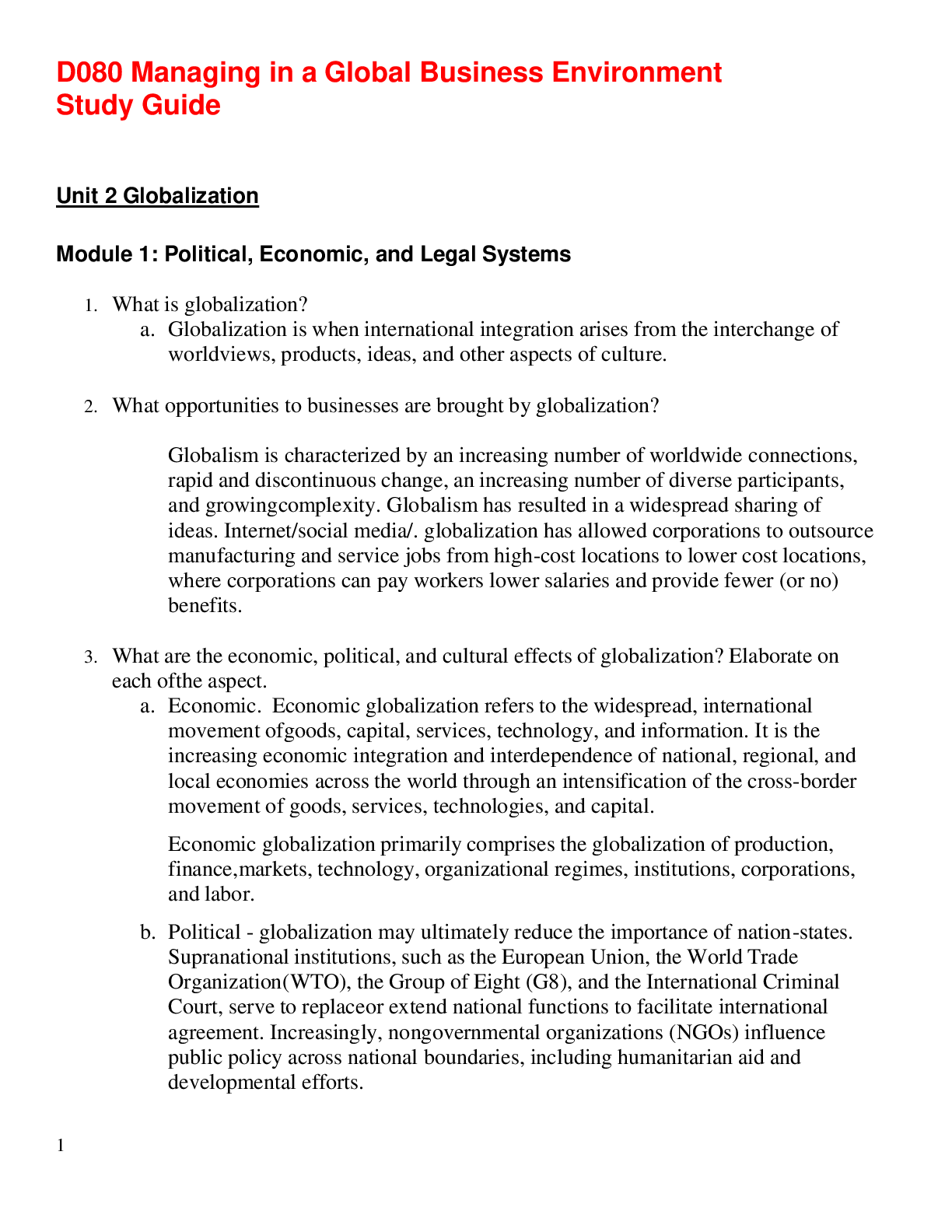
Reviews( 0 )
Document information
Connected school, study & course
About the document
Uploaded On
Nov 12, 2021
Number of pages
62
Written in
Additional information
This document has been written for:
Uploaded
Nov 12, 2021
Downloads
0
Views
60

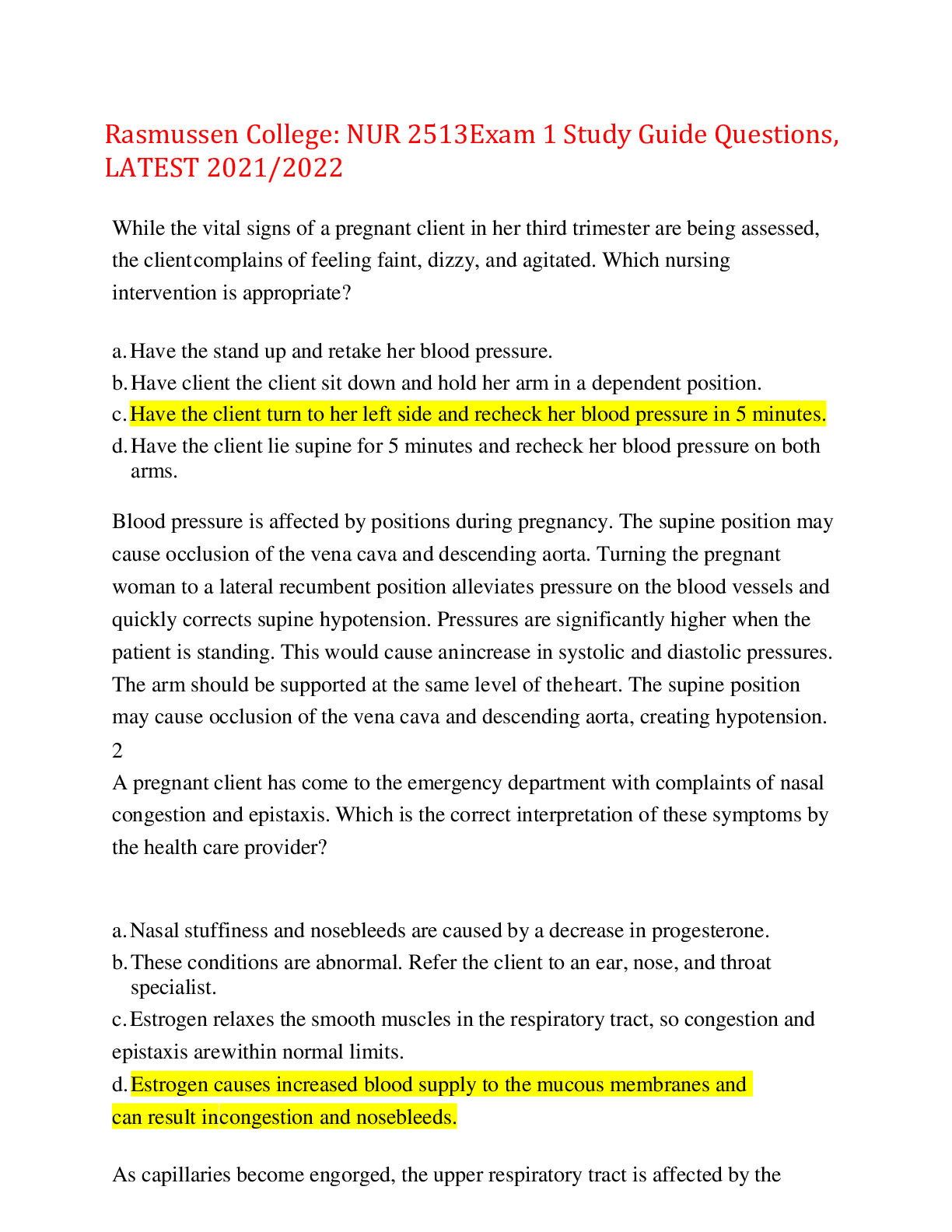

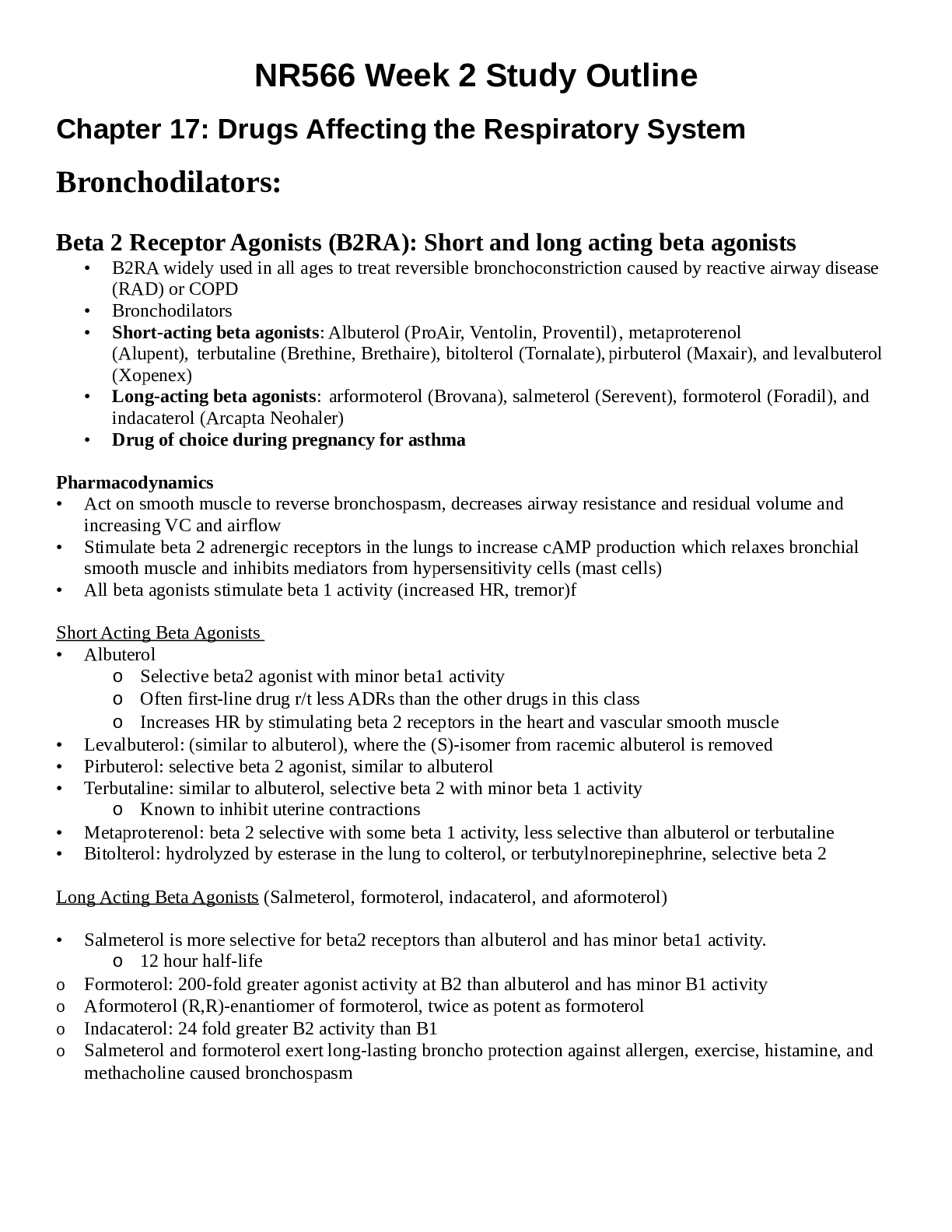
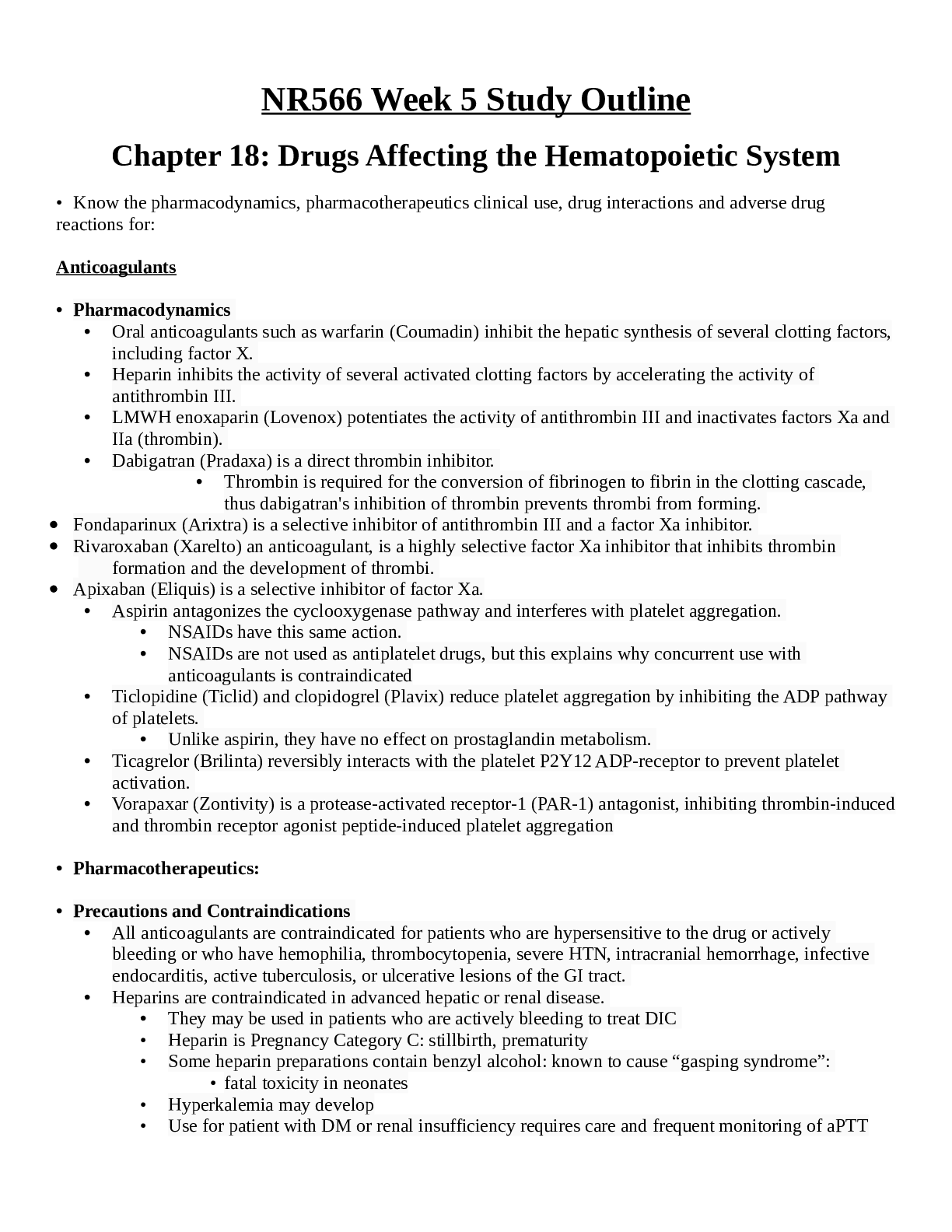
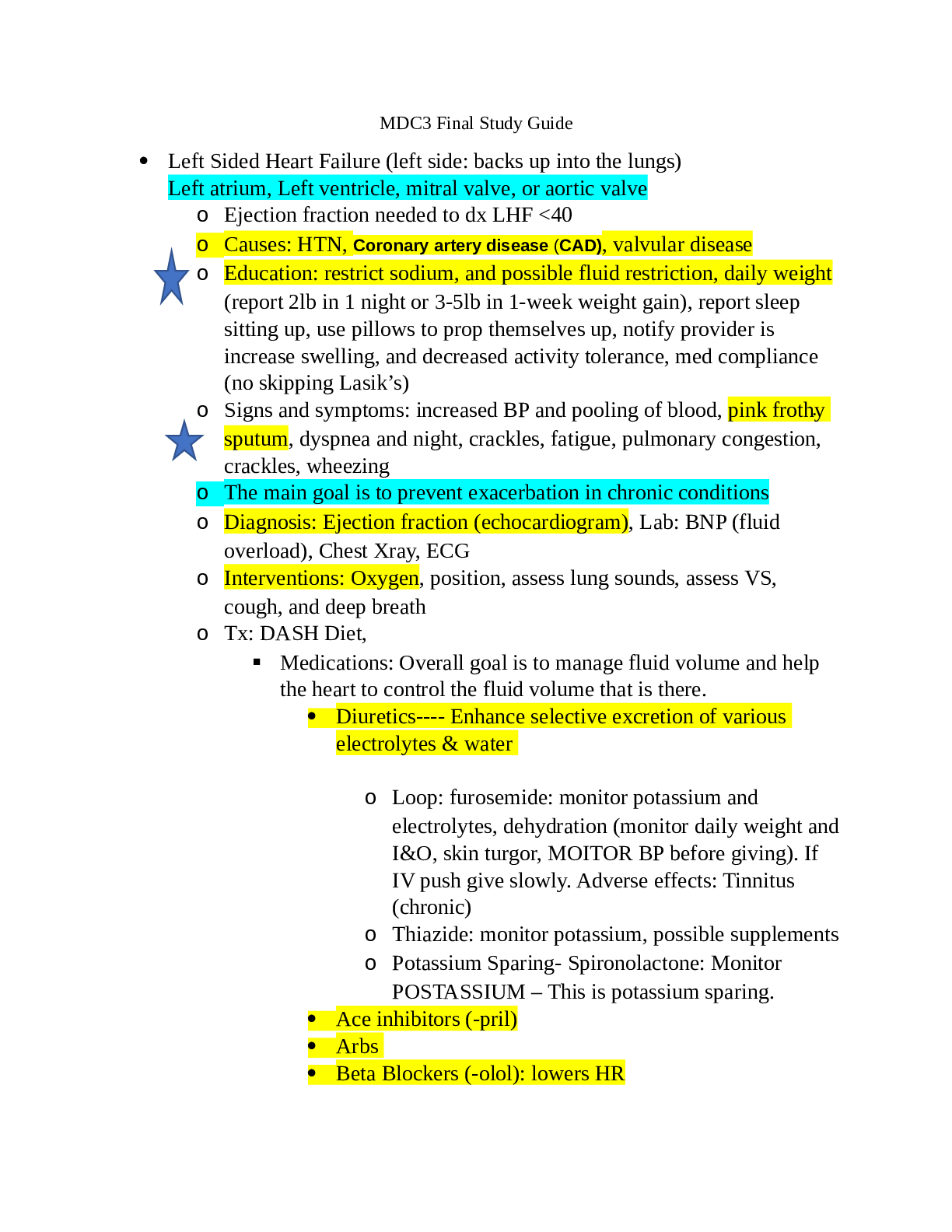

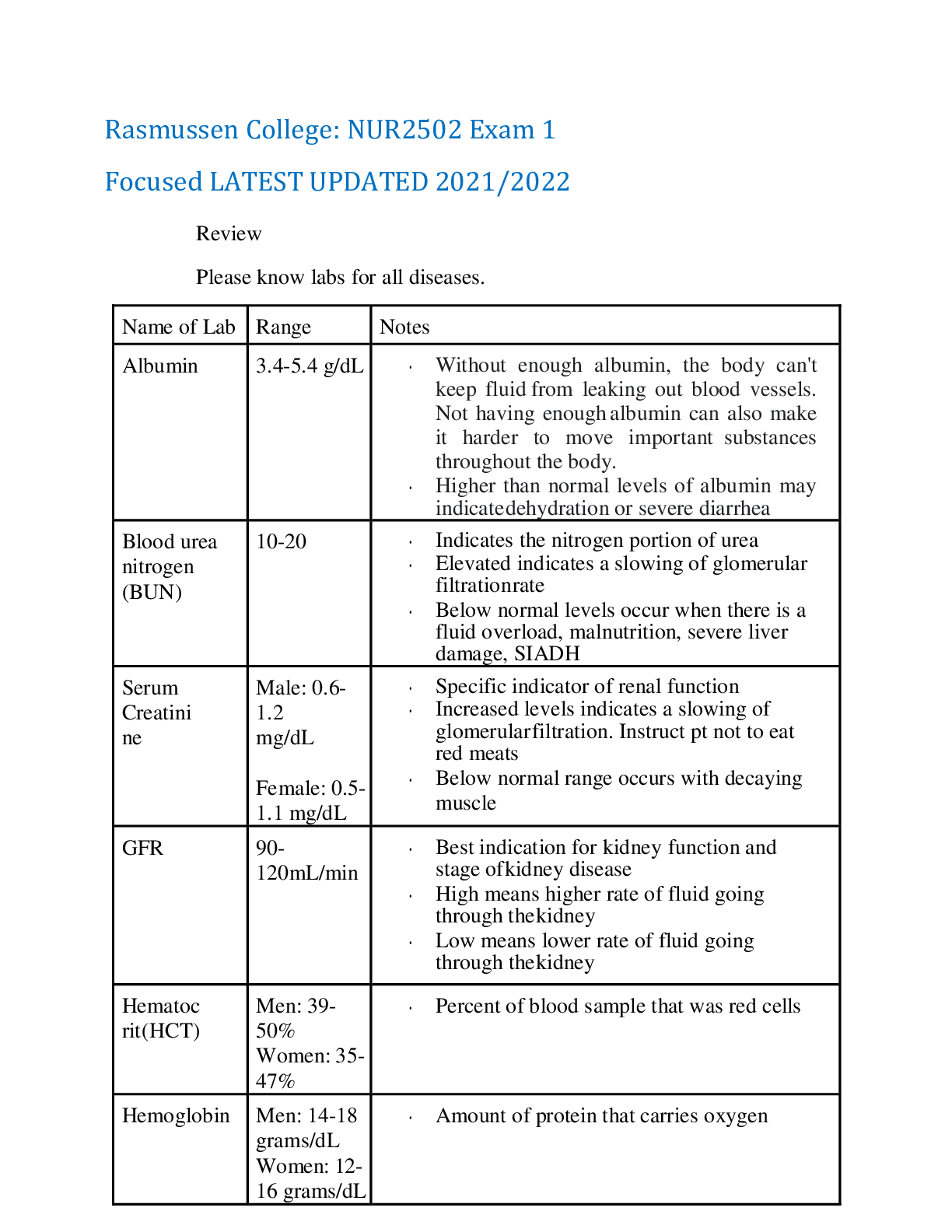
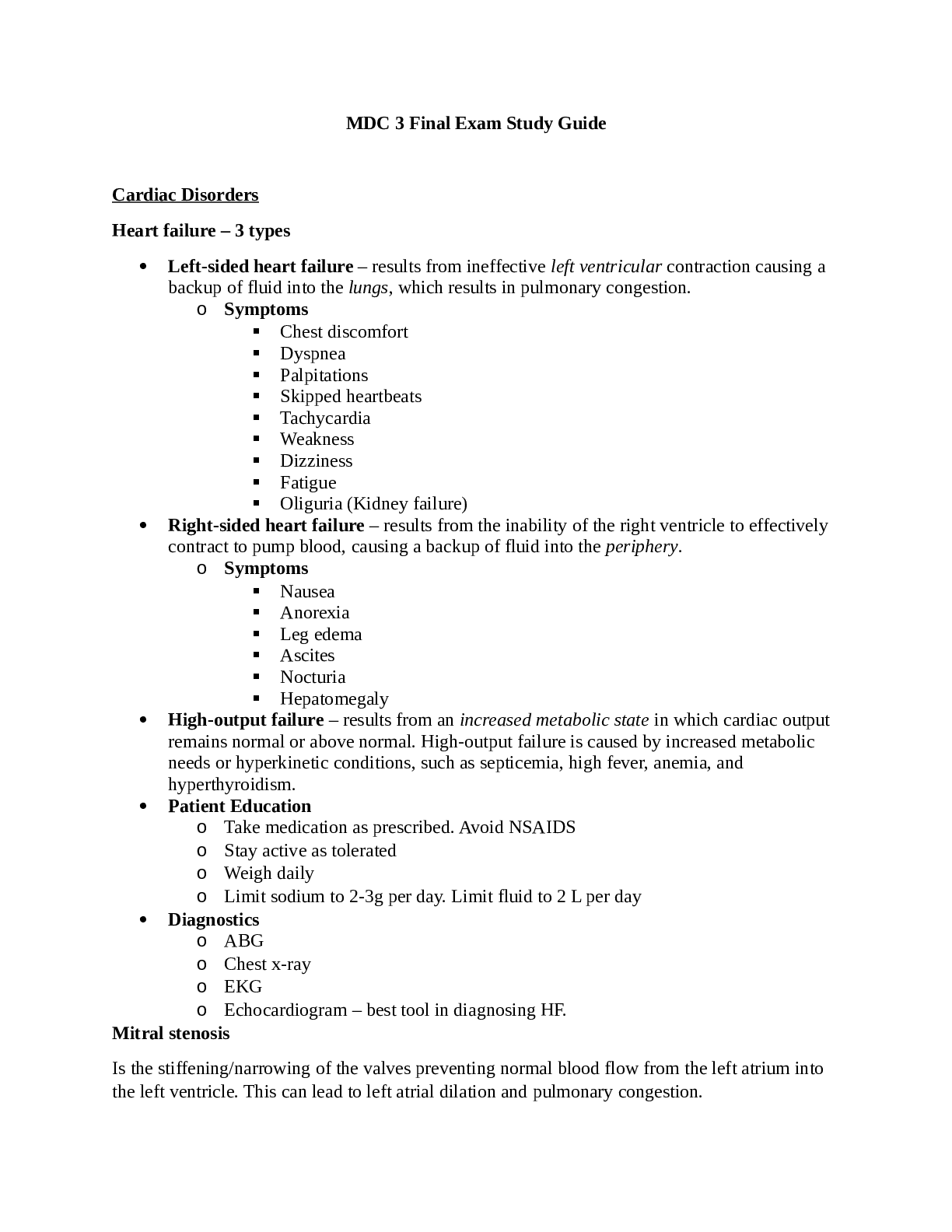
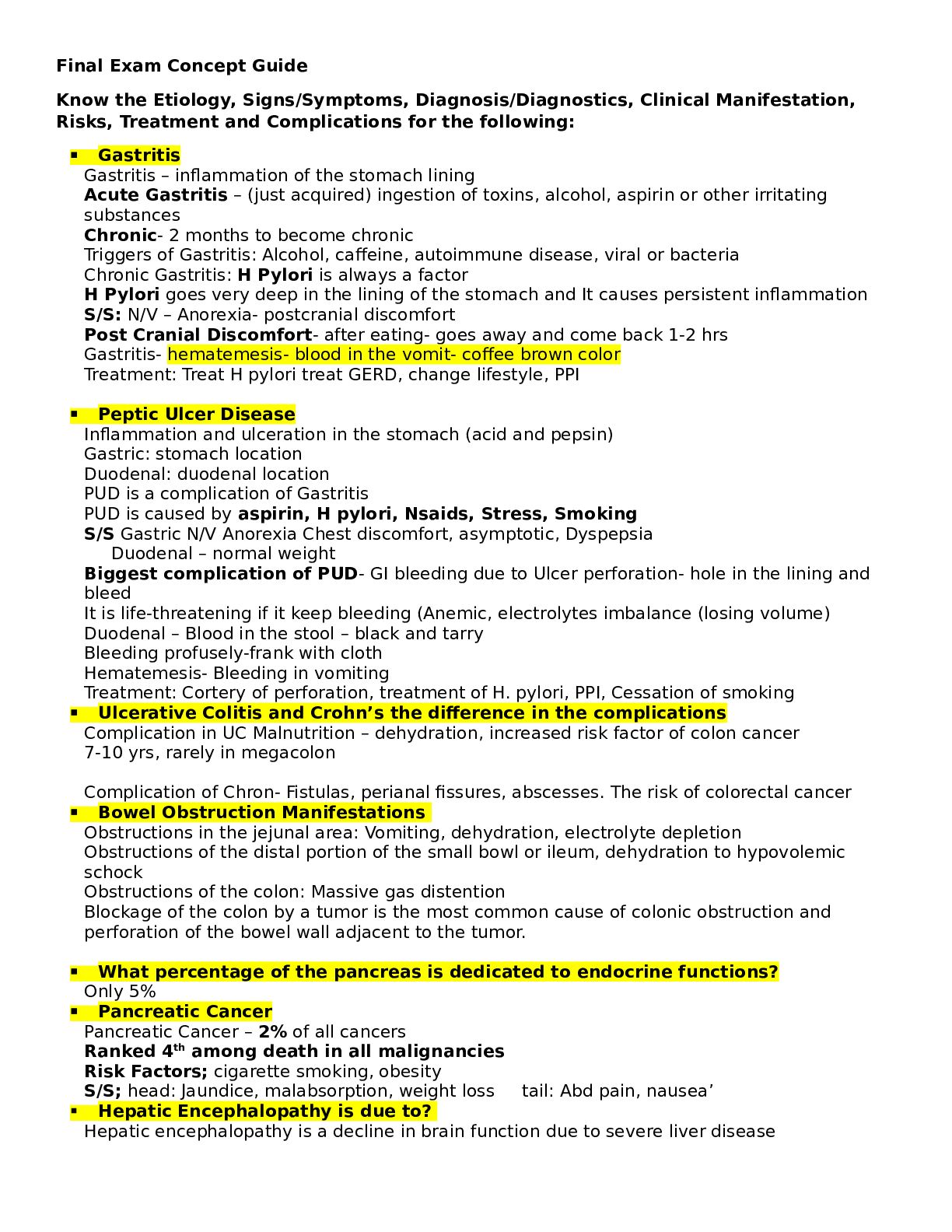
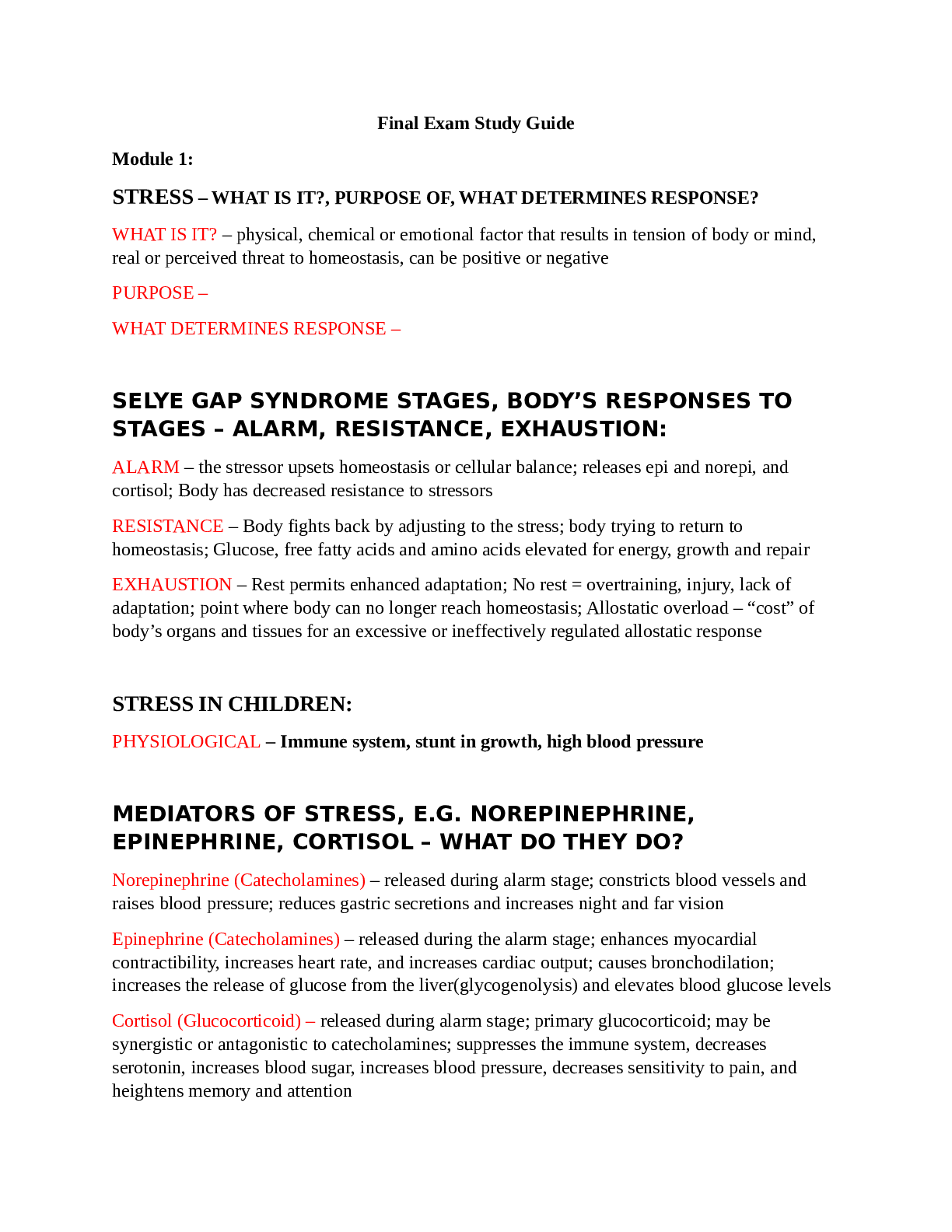

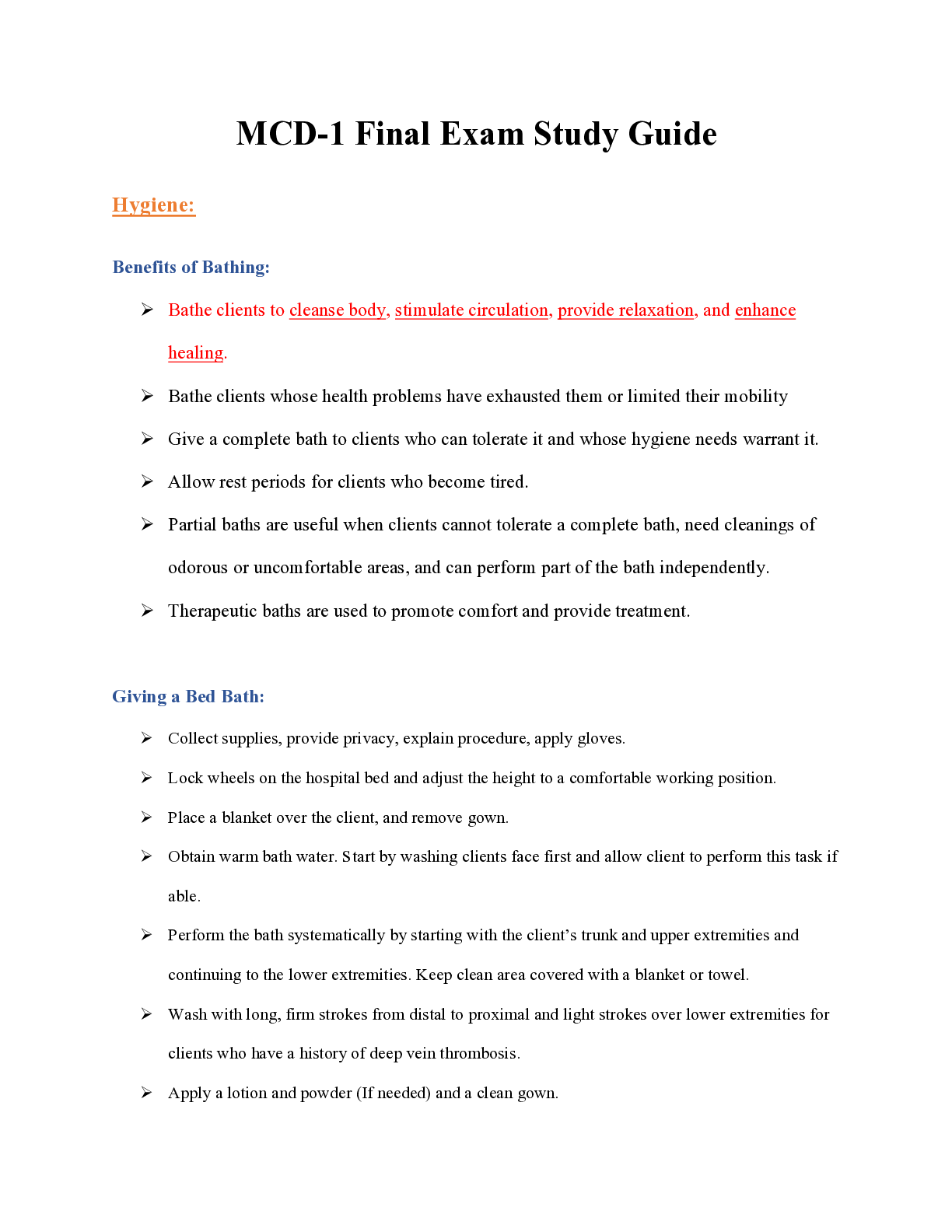
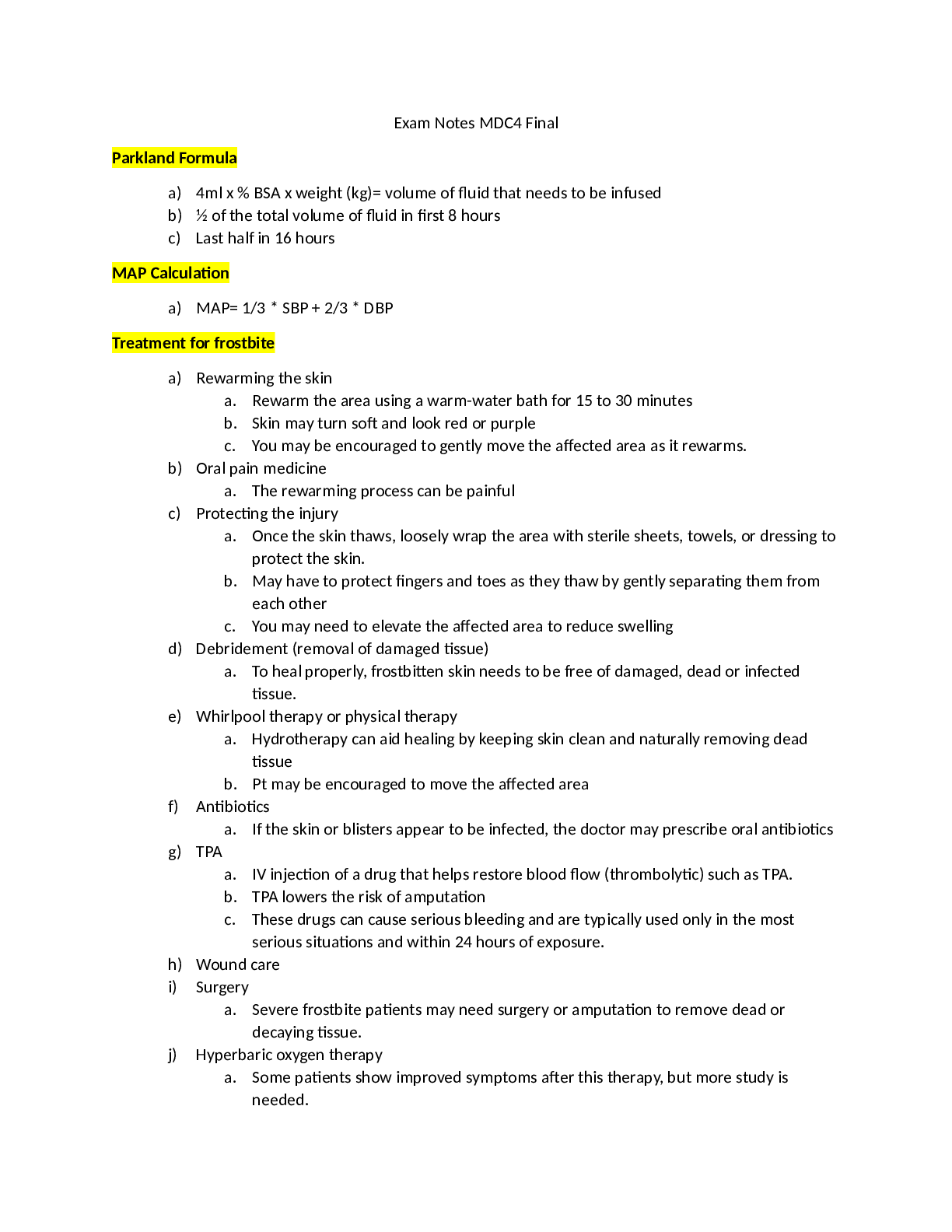

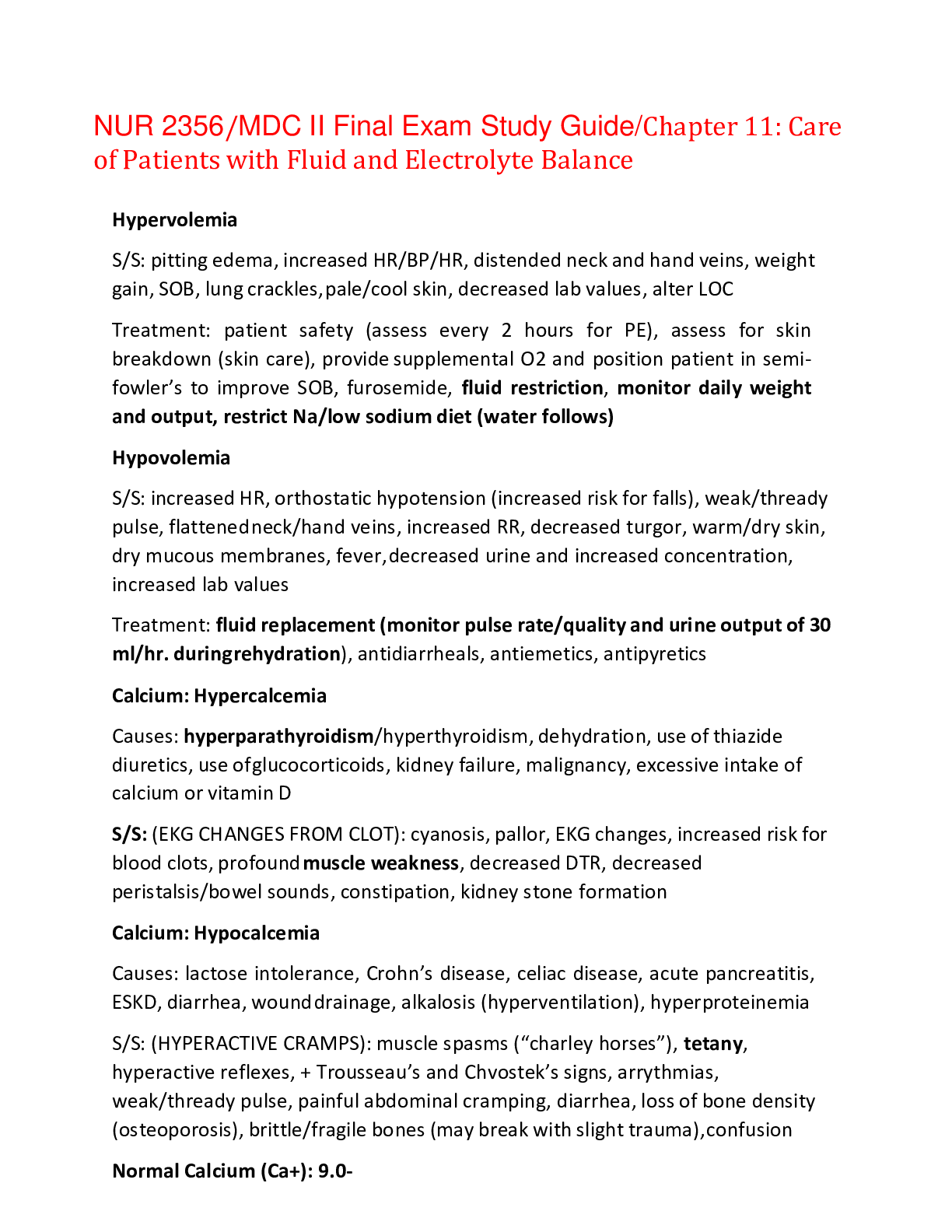

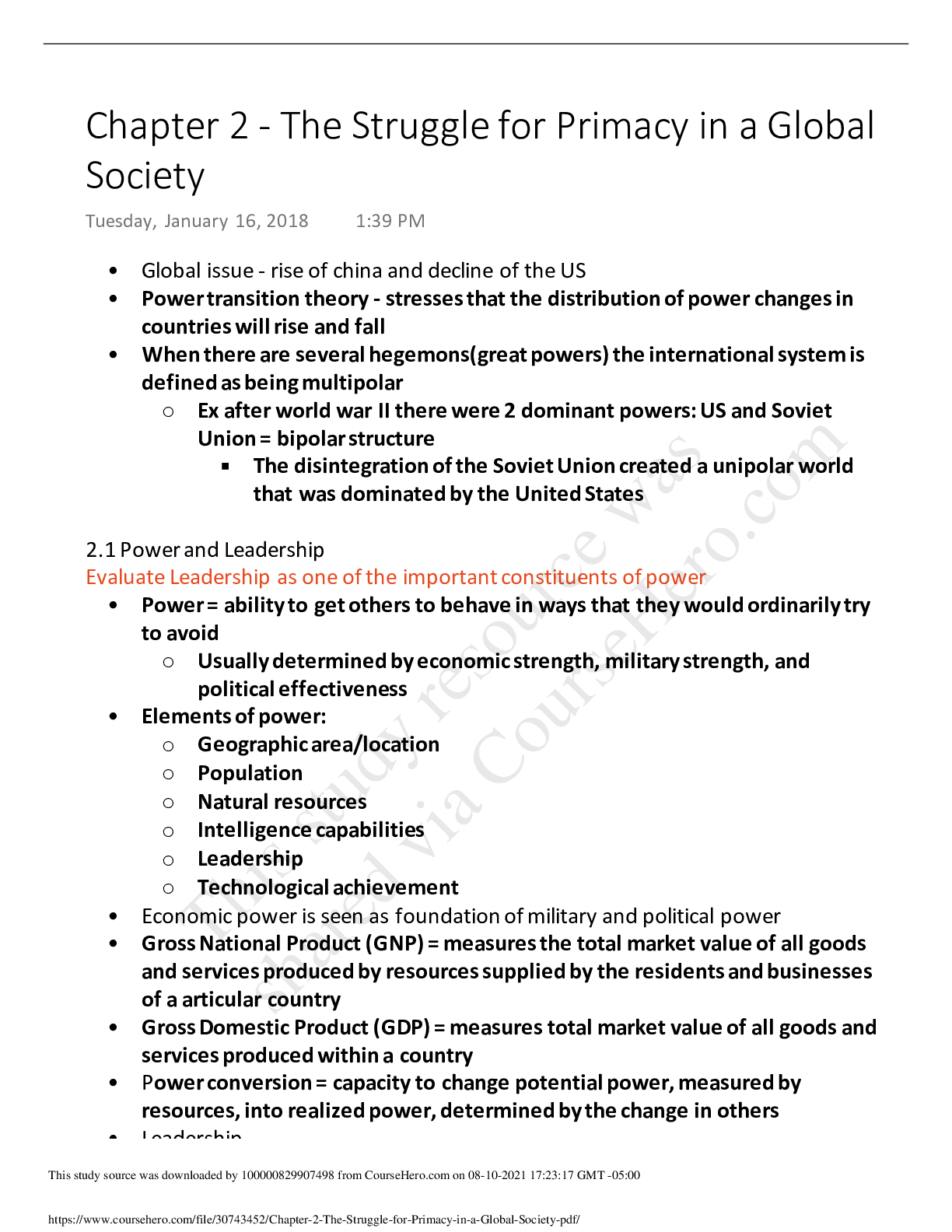







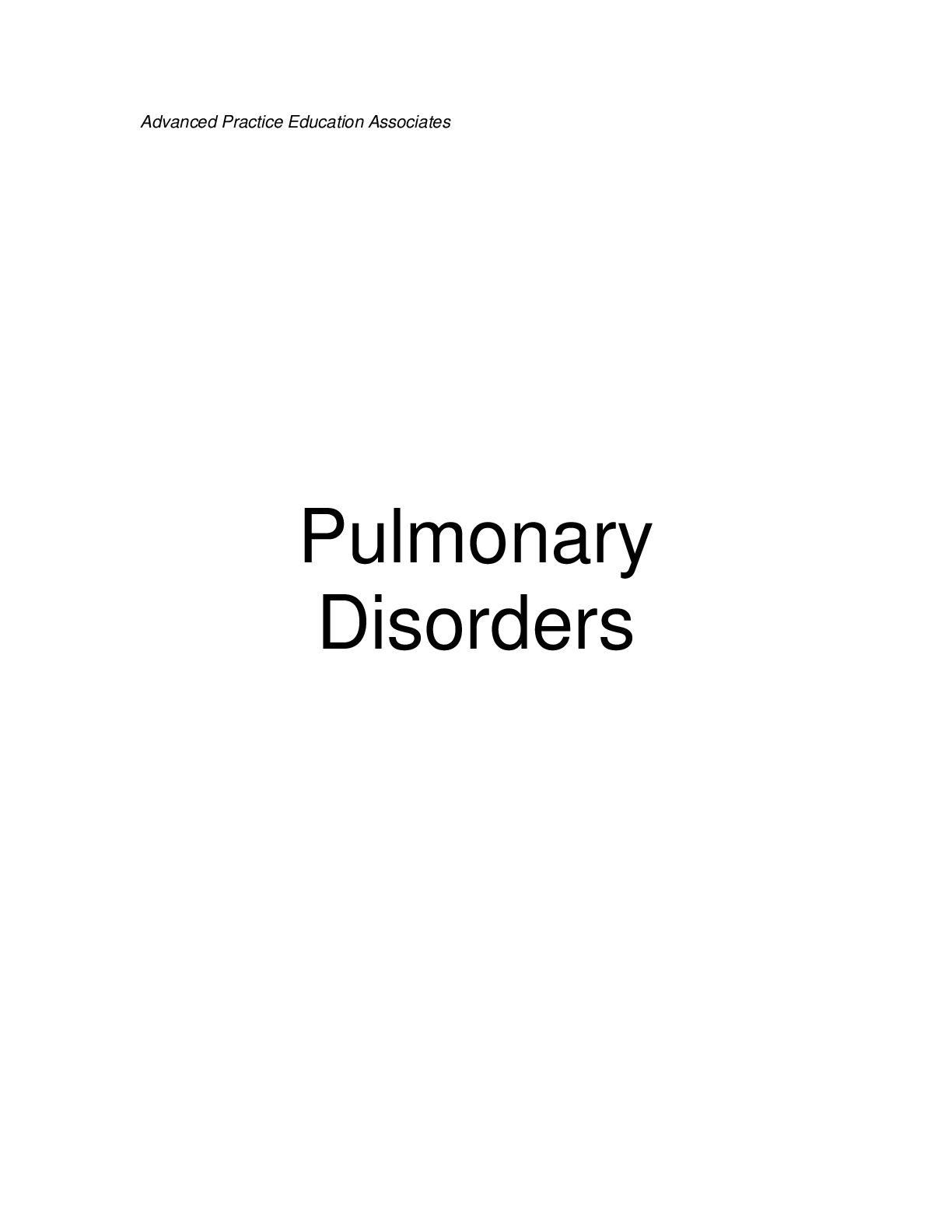
.png)





